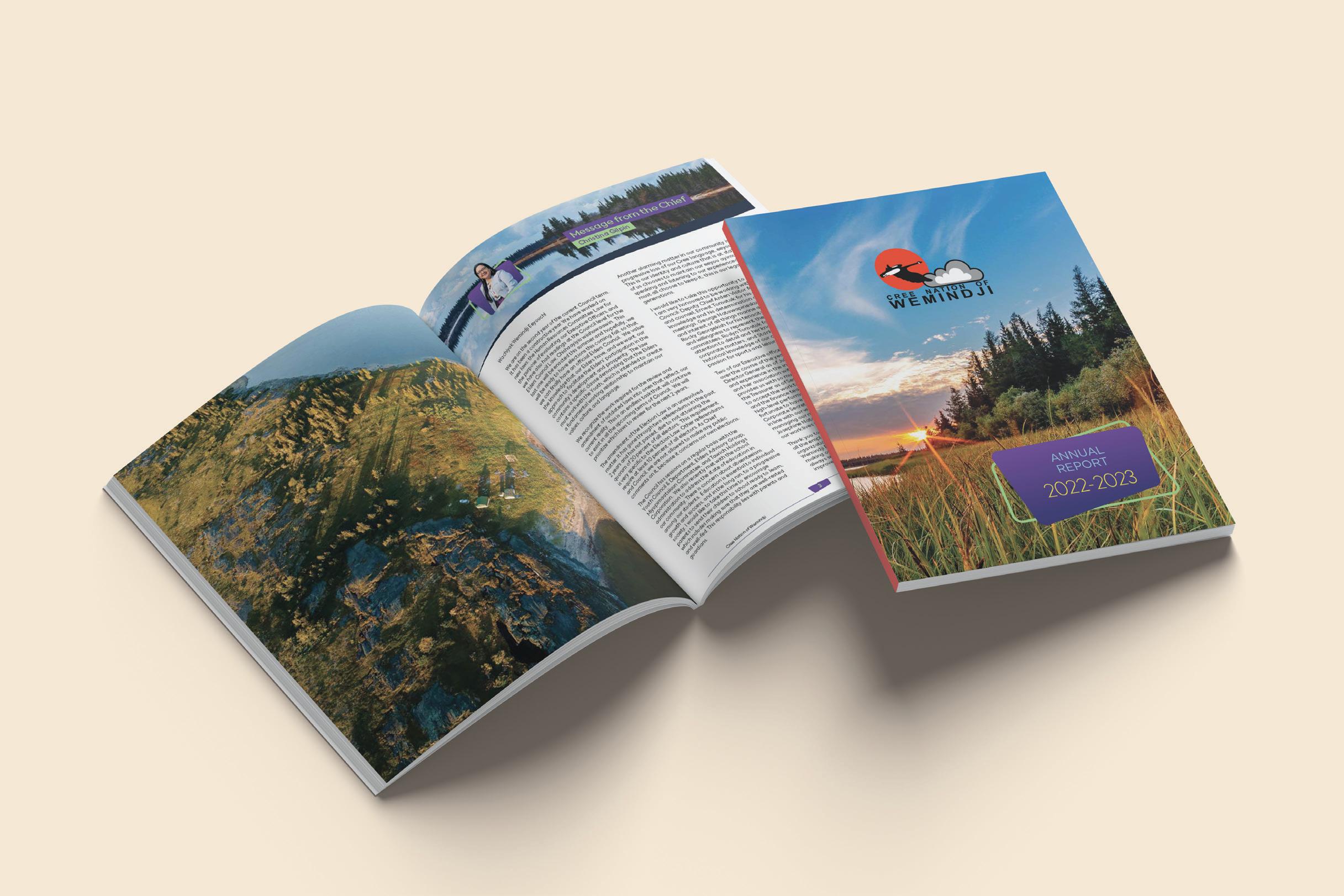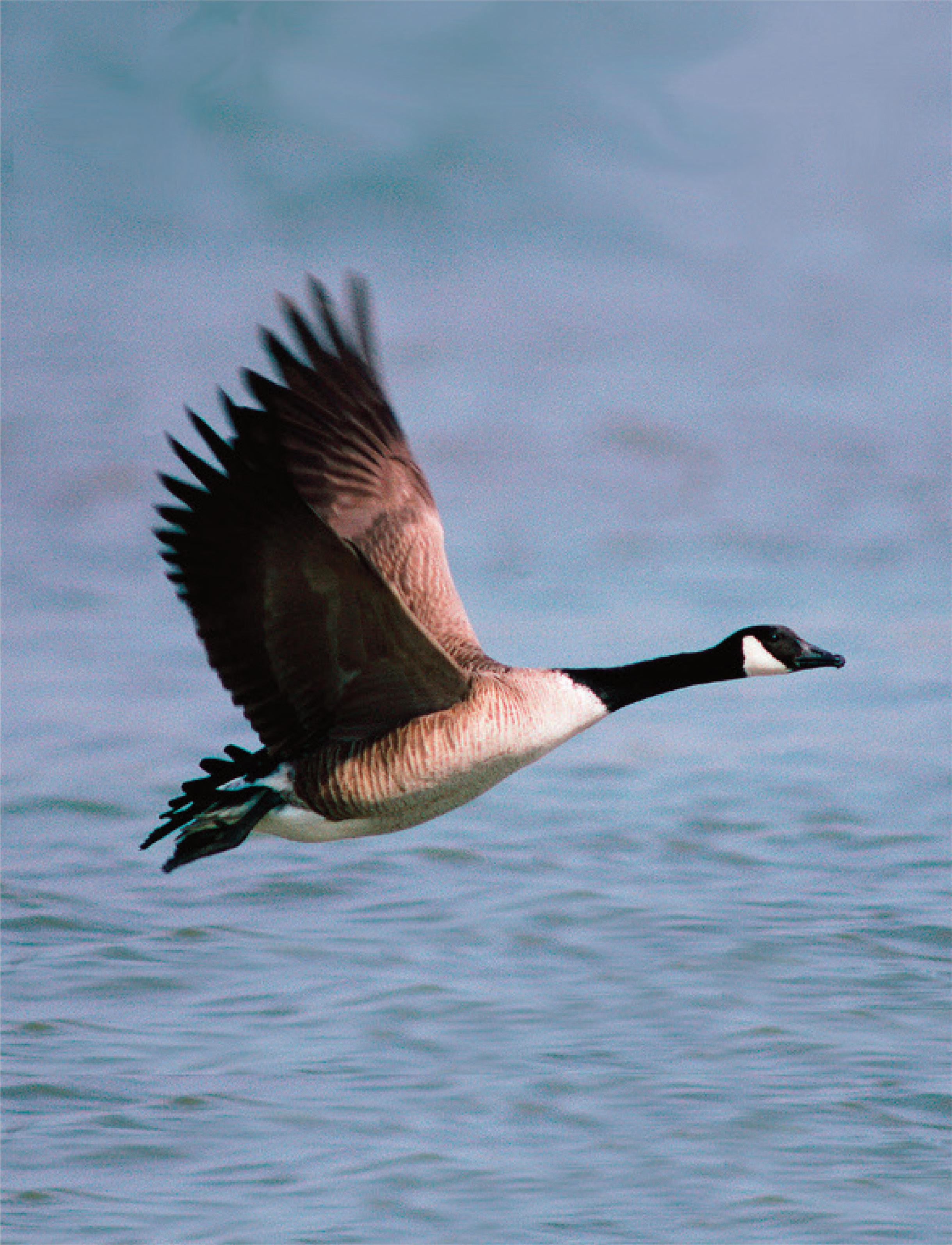


























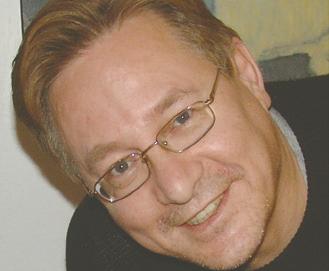
Ed Note: There are times when it seems as if the Nation is covering the same issues year after year and decade after decade. This is an excerpt of an editorial published in 2005. It still resonates.
When I first looked at the studies of mining contamination of the waters around OujeBougoumou I was more than a little angry. Many of you, once you read the story will feel equally shocked and outraged over what has been withheld from the OujeBougoumou people. This information is the smoking gun: the Quebec government’s own data show that the lake and river sediments are poisoned.
The amount of contamination allowable under Canadian federal law was illegally exceeded many times over and nothing has ever been done about it even to this day. Given that Quebec has suppressed the data from this study for three years, it’s obvious the government has no intention to enforce the law. This begs the question of whether or not the concepts of environmental protection, guidelines and law are real within Canada, and within the province of Quebec.
The Quebec government has known that the guidelines have been exceeded and are still allowing working mines to continue their old practices of dumping mine tailings and waste into the lakes. Is the lack of enforceability planned? Is the fact that the primary victims of this poisoning are Cree having any impact on these decisions.
Epilogue: This excerpt was published in Volume 12, No. 20 on August 19, 2005. The Nation had already covered the OujeBougoumou mining contamination story for almost a decade. Many at the time

said there were no problems, or at least it wasn’t anything to worry about. American mine decontamination expert Chris Covel told another story. He had taken samples from the area and when he had them tested analysts said that they never had never seen such high levels of contamination.
It is still a problem as there has been no clean-up of the contamination. It’s a lesson for the Cree when looking at new mines in Eeyou Istchee. It was amazing when the Cree youth stopped a planned
uranium mine from operating in our traditional territory.
Like the youth, all Cree should be concerned about the potential risks, not just to the environment but also the other inhabitants of the land – the animals and people. If we can’t even begin cleaning up the environment around Ouje-Bougoumou almost 20 years later, then don’t expect a lot from the federal or provincial governments when problems pop up in the future.
Randy Mayer CONTRIBUTING WRITERS X. Kataqapit, S. Orr, P. Quinn, J. Janke DESIGN Matthew Dessner SALES AND ADVERTISING Danielle Valade, Donna Malthouse THANKS TO: Air Creebec
CONTACT US: The Nation News, 918-4200 St. Laurent, Montreal, QC., H2W 2R2 EDITORIAL & ADS: Tel.: 514-272-3077, Fax: 514-278-9914 HEAD OFFICE: P.O. Box 151, Chisasibi, QC. J0M 1E0 www.nationnews.ca EDITORIAL: will@nationnews.ca news@nationnews.ca ADS: Danielle Valade: ads@nationnews.ca; Donna Malthouse: donna@beesum.com
SUBSCRIPTIONS: $60 plus taxes, US: $90, Abroad: $110, Payable to beesum communications, all rights reserved, publication mail #40015005, issn #1206-2642 The Nation is a member of: The James Bay Cree Communications Society, Circle Of Aboriginal Controlled Publishers, Magazines Canada Quebec Community Newspa per Assn. Canadian Newspapers Assn. Les Hebdos Sélect Du Québec. Funded [in part] by the Government of Canada. | www.nationnews.ca | facebook.com/NATIONnewsmagazine | Twitter: @creenation_news


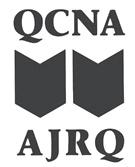
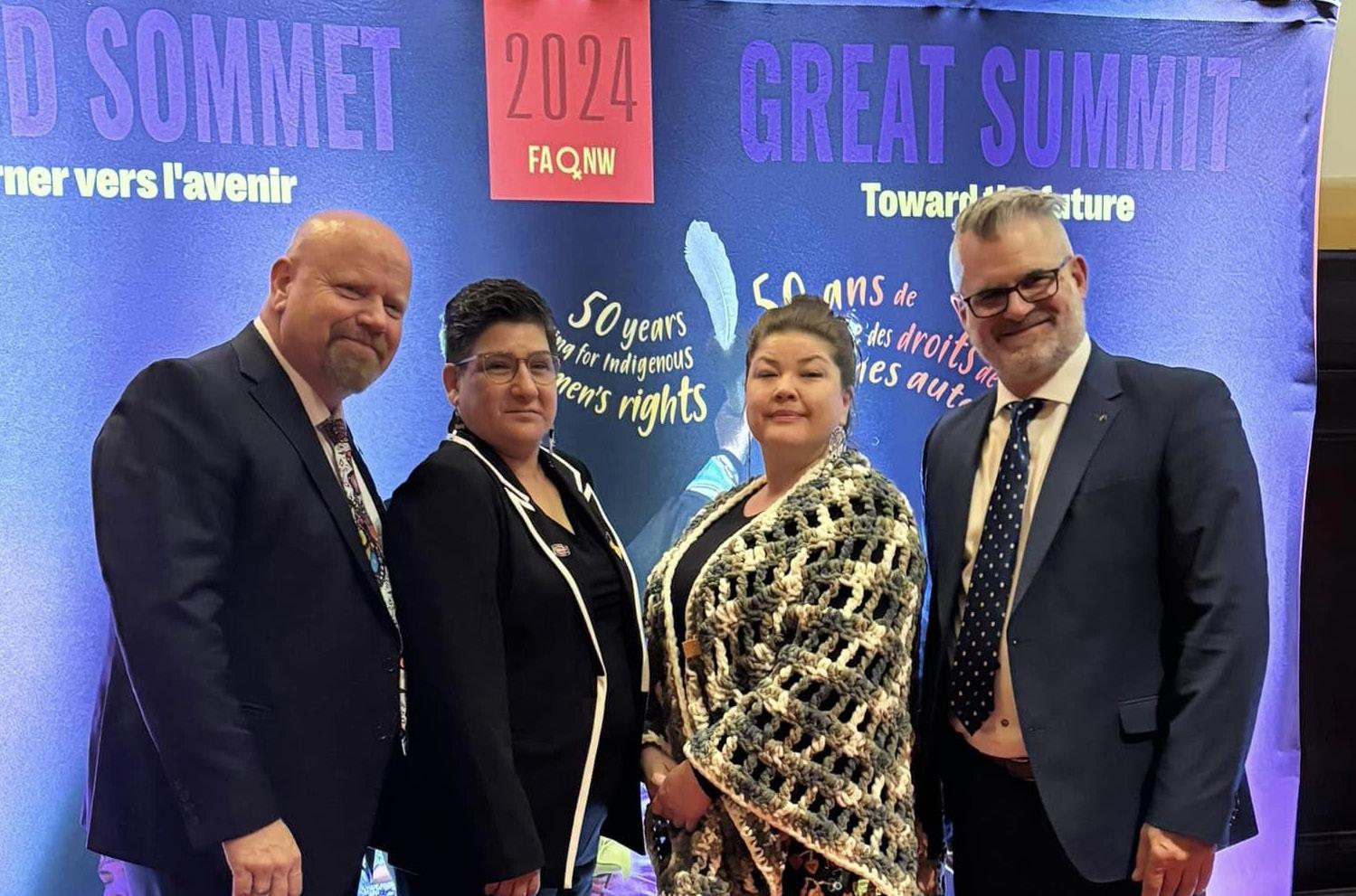
The theme of empowerment echoed through Quebec City as the Quebec Native Women (QNW) concluded their 2024 Great Summit May 16 after four days of discussions and planning at the Hilton Quebec hotel. Gathering nearly 160 delegates from diverse nations across Quebec, the summit continued the journey towards equality and recognition of Indigenous women’s rights.
Since 1974, QNW has represented Indigenous women in Quebec, aiming to improve their living conditions through the fight for equality, justice, nonviolence, education, health, and economic and social security.
“This Great Summit marks a turning point in our fight for equality and recognition of the rights of Indigenous women,” said QNW President Marjolaine Étienne. “We have so many different nations represented, and it gives us a vast array of perspectives from which to help identify priorities.”
The summit was structured around themes of Leadership and Governance; Social and Economic Development:
Education and Women’s Entrepreneurship; Culture and Identity: Language and Intergenerational Relationships; and Territory and Climate Change.
“We have women from all professional backgrounds attending,” Étienne noted. “Politicians, leaders, businesspeople, lawyers, teachers and homemakers – we have a lot of unique perspectives coming together.”
Nadia Robinson, a spokesperson for the Council of Elected Women of the AFNQL, echoed these sentiments. “This Great Summit represents an important moment in the history of Indigenous women in Quebec. It will be an opportunity to take stock of the progress made and the path ahead,” she said.
Government representatives also recognized the significance of the summit. “It is with great enthusiasm that I highlight the 50th anniversary of Quebec Native Women and the holding of its summit in May. I trust that the findings and recommendations arising from these discussions will enable us to meet the needs of Indigenous women and girls
more effectively,” declared Martine Biron, Minister of International Relations, La Francophonie, and the Status of Women. Ian Lafrenière, Quebec’s Minister responsible for Relations with the First Nations and the Inuit, praised the organization’s impact. “Whether it’s for better legal services or to raise awareness about the reality of Indigenous women in communities and urban settings, our government has always recognized the leadership of QNW. I hope that Indigenous women will continue to be ambassadors for young Indigenous people across Quebec.”
Étienne’s vision for the future was clear. “Women are an untapped resource and are capable of leading and setting policy, so we want to empower them to do that,” she said.
As the summit ended, the spotlight shifted to the Recognition Gala, commemorating QNW’s 50th anniversary. The gala paid tribute to the trailblazing leaders who have steered QNW since its inception.
Ministère de la Santé et des Services sociaux
ENTRY INTO FORCE OF CERTAIN PROVISIONS OF THE ACT RESPECTING FAMILY LAW REFORM WITH REGARD TO FILIATION AND AMENDING THE CIVIL CODE IN RELATION TO PERSONALITY
ON JUNE 8, 2024, THE PROVISIONS RELATING TO THE RIGHT TO KNOW ONE’S ORIGINS WILL COME INTO FORCE.
Main changes brought about by these provisions:
• First-degree descendants of deceased adoptees aged 14 and over and grandparents of origin will be added to the list of those eligible to obtain information, backgrounds, disclosures and reunion services;


• Refusals to disclose identity registered by a parent of origin for adoptions completed before June 16, 2018 will cease to have effect on the adoptee’s eighteenth birthday;
• Adoptees, and their first-degree descendants if deceased, will be able to obtain a copy of the original birth certificate and adoption judgments;
• The rules governing reunions between original siblings have been modified, and the concept of concordance has been abolished.
Finally, the rules governing the communication of medical information requested by a doctor will be more flexible.
As of June 8, 2024, official forms for requesting backgrounds, disclosures and reunion services will be available on Québec.ca.
For more information on the subject, or to contact the entities responsible for providing services, visit Québec.ca/Bill2.
As the 2024 National Aboriginal Hockey Championships (NAHC) wrapped up in Grande Prairie, Alberta, the impressive performances of young Cree athletes from Eeyou Istchee showcased the immense talent in Indigenous youth hockey. This year’s event brought together over 350 athletes and officials, celebrating not only athletic prowess but also cultural unity and pride.
The journey for the eight Cree players selected to represent the men’s Team Eastern Door and the North (EDN) began long before they hit the ice in Grande Prairie. Head coach Steeve Gros-Louis emphasized the importance of the selection camp back in January. “There was a nice atmosphere, and there were a lot of youth that wrote to me after they got home to say they were happy to have participated in the camp, even if they hadn’t been selected,” he shared.
Gros-Louis, from Wendake, underscored the camp’s significance. “This camp is just as important for those who are picked as it is for those who aren’t. It gives a chance for everyone to assert themselves and gives hope to the younger ones who still have work to do, that they have what it takes to get onto next year’s team.”
The selected players from Eeyou Istchee included Lucas Gunner (Mistissini), Channing Cooper (Waswanipi), Samuel Kitty Jr. (Chisasibi), Andrew Mark (Mistissini), Collin
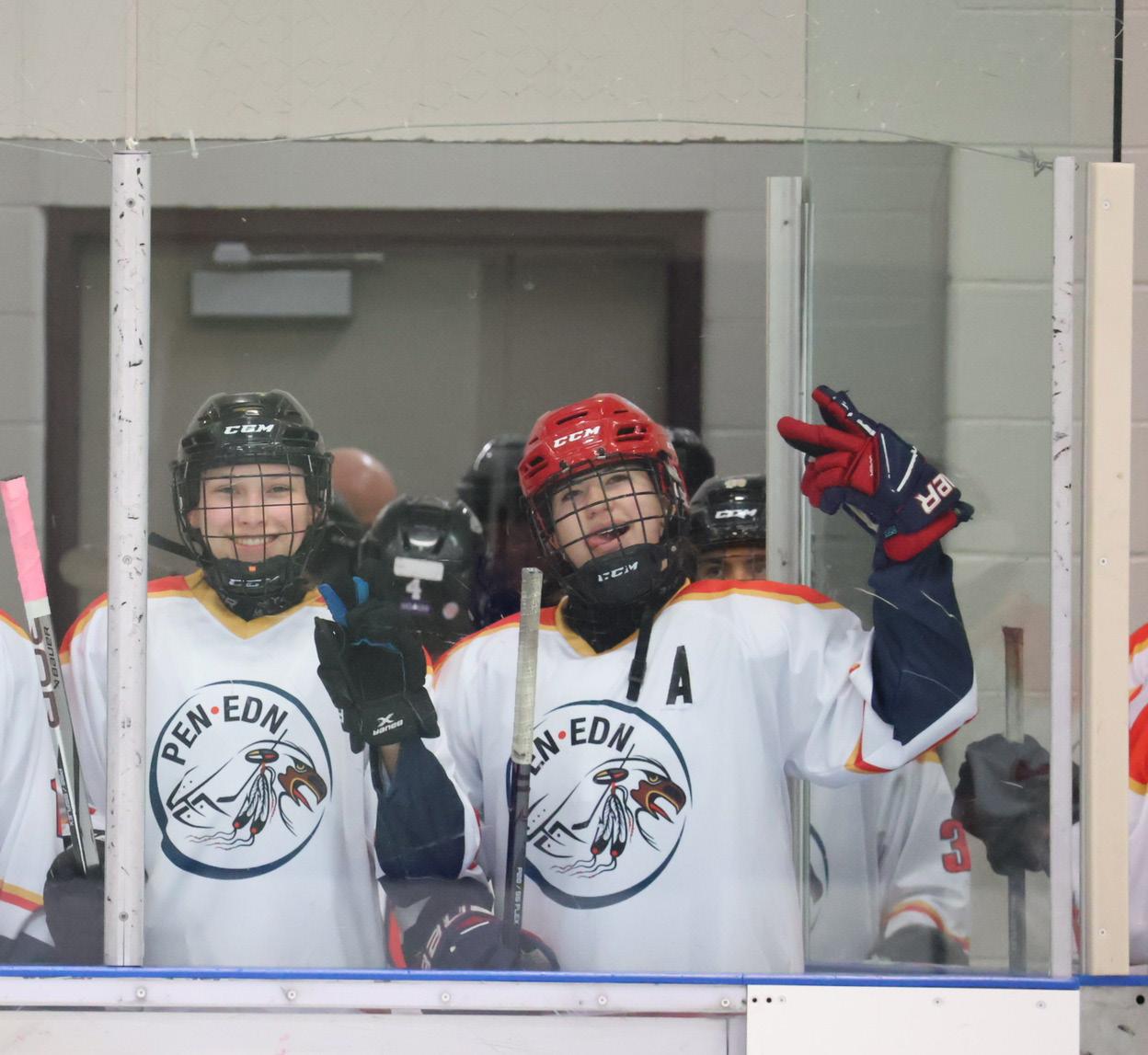

Moses (Waskaganish), Hayden Mowatt (Chisasibi), Eric Snowboy (Chisasibi), and Samuel Trapper (Chisasibi).
Joining them were six players from Kahnawake, with Bocephus Dailleboust among the first picked. Notably, Dailleboust, along with Lucas Gunner, Jeremy Picard (Pessamit), and Mishikon Whiteduck (Kitigan Zibi), were returning players from last year’s roster, adding experience to the team.
The women’s team, led by head coach Patrice Dominique (Mashteuiatsh), also featured talented players from Eeyou Istchee. Tyraena Nakogee (Ouje-Bougoumou), Amberly Neeposh (Mistissini) and Maria Mistacheesick (Wemindji) were selected, highlighting the region’s contribution to both the men’s and women’s teams.
The NAHC kicked off with a memorable opening ceremony at the Design Works Centre in Grande Prairie, where Hythe Regional School’s Grade 3 Cree Language
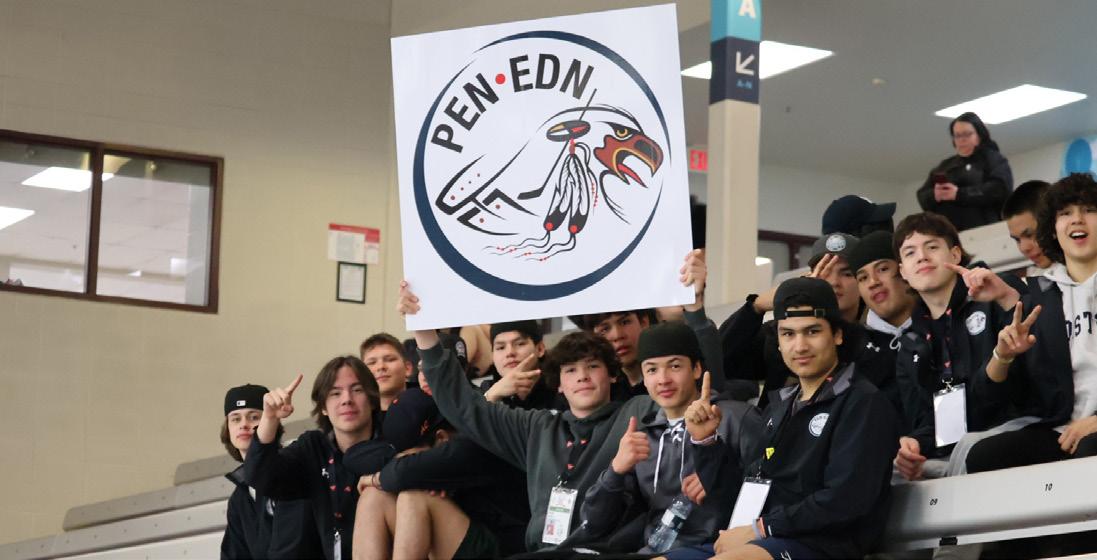
students sang a hello song and the national anthem. Grande Prairie Mayor Jackie Clayton underlined the event’s importance, saying, “This elite sporting event marks a significant milestone as it lands in Alberta for the first time in its history.”
As the competition progressed, both the men’s and women’s EDN teams faced intense matches that tested their skills and resilience.
On Day 4, the women’s team achieved a remarkable 4-3 victory against the Atlantic team, securing the winning goal with just 29 seconds left in the game. However, their triumph was tempered by a subsequent loss to Manitoba.
Day 5 saw the men’s team deliver a stunning 7-6 win against the Atlantic team, overcoming a five-goal deficit in the third period, with Picard earning a hat trick. Unfortunately, their momentum was halted by a defeat to Team Alberta, marking the end of their championship dreams.
The women’s team faced the Atlantic team again but also fell short, despite demonstrating unwavering commitment. Their effort throughout the tournament was commendable, embodying the spirit of the championships.
As the NAHC concluded, Team Ontario’s male and female teams both claimed gold. Yet the achievements of Team EDN were significant, reflecting the hard work and talent of the athletes and their coaches.
A Team EDN representative expressed heartfelt gratitude: “A big thank you to our amazing coaches, athletes and parents of Team EDN for making this Indigenous National Hockey Championship possible! Your dedication, passion and team spirit have lit up every moment on the ice. We are proud of all that we have achieved together. Thank you for this memorable journey!”

Jo-Ann Toulouse, the executive director of the Chibougamau Eenou Friendship Centre, is leaving her role after 18 years. The friendship centre is seeking a new director to lead the organization’s vital community services and cross-cultural exchanges.
Founded in 1969 to promote mutual understanding between Indigenous peoples and newly arrived residents through events and cultural exchanges, it was also the first of its kind to open in Quebec. As Chibougamau’s population has grown to 8,000, the centre provides services for the town’s approximately 800 Indigenous residents, of which 98% are Cree, along with the many more who transit through.
“Our community is up to Whapmagoostui and touches Val-d’Or and Lac Saint-Jean, so our zone of influence is huge,” Toulouse recently told Elma Moses on CBC’s Winschgaoug program. “I’m very grateful to this community because there’s been a lot of giving and care. I like to think I gave it back and people felt loved and appreciated.”
Like many friendship centres, Chibougamau offers a variety of social services, meal programs and a calendar of family-friendly community events. Collaborating with the Cree Women of Eeyou Istchee Association, it hosts a woman’s circle for crafting and other activities.
“My favourite part is when I hear Elders downstairs,” said Toulouse. “It always makes me smile when Elders say I think she speaks Cree because look how good she takes care of us.
Seeing how comfortable they were in the space coloured my experience of the friendship centre for life.”
The Centre has expanded services in justice, education and employability. As it develops a proximity clinic, it’s growing family services and psychosocial supports. It’s also collaborating in the development of a postsecondary student residence with primarily family spaces to accommodate the many mature students with children.
“It’s not a paper job – it’s a people job with a whole lot of paper,” Toulouse explained. “I’ve grown along the way and the gifts we have are nothing if they’re not shared. I’m grateful this community has given me the opportunity to do that.”
Canada’s largest museum, the Royal Ontario Museum in Toronto, has appointed Rhéanne Chartrand as its inaugural curator of Indigenous art and culture. She will be responsible for stewarding and showcasing its Indigenous collections.
“I’m looking forward to working with my colleagues at ROM to ensure Indigenous peoples’ cultural sovereignty over how their belongings are cared for and shared,” said Chartrand. “It’s so important
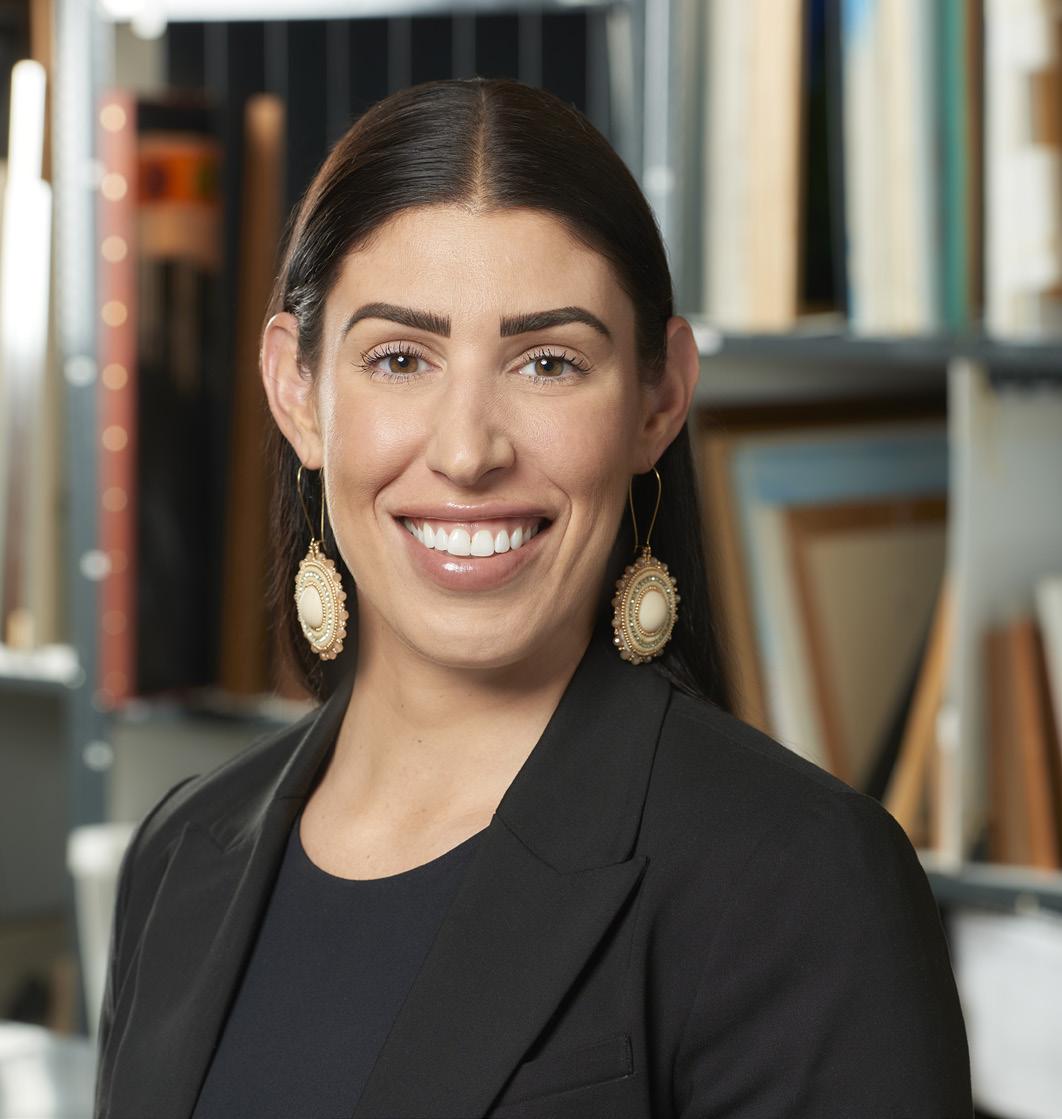
to have positive, affirming representations in museums that display us as thriving cultures.”
A Métis curator with over a decade of experience in cross-cultural and multidisciplinary exhibitions, showcases, festivals and programs, Chartrand previously served as curator of Indigenous Art at the McMaster Museum of Art. She is the co-founder of the Shushkitew Collective, a Métis arts equity initiative, and was a board member with the Indigenous Curatorial Collective 2018-2022.
In this role, Chartrand will help develop educational and
community outreach and programming, steer Indigenousfocused exhibitions and conduct scholarly research. Chartrand will work on the repatriation of Indigenous ancestral items from the ROM collection. She began her museum career in 2007 as a volunteer researching and inventorying ancestral belongings stewarded by ROM.
“I’m passionate about helping ROM to revolutionize its curatorial and collections care practices in service of Indigenous communities and beyond,” said Chartrand.
Marking the beginning of spring and the reawakening of Eeyou Istchee, Goose Break was once again an opportunity to reconnect with the land, family and friends. The Cree Nation Government honoured the annual tradition with a special acknowledgement of land users affected by last summer’s forest fires.
“Let us be mindful that many of us will have a clean-up to do, some repairs and for some, to rebuild what has been lost,” stated Grand Chief Mandy Gull-Masty. “What will remain forever strong is our identity, culture and language and our connection to the land which is the source of our survival and cultural practices.”
The Cree Trappers’ Association launched a cabin rebuilding program to cover half the construction cost, which will include metal roofs and two exit doors to mitigate fire risk. Over the next three years, it intends to help build 50 cabins annually to make up for those lost last summer while also covering half the cost of cabin insurance, which increased $400 this year.
With changing ice conditions and migration patterns, the CTA asked land users to report polar bear sightings. As earlier snow melts prevent passage to camps over waterways by snowmobile, community airlift programs are becoming increasingly popular.
“It’s a lot more convenient to travel safely to their campgrounds,” explained Matthew Wapachee, Mistissini’s spring airlift coordinator. “You’re always planning on the go, and something comes up you have to work into your flight plans. It was kind of hectic but with our group of people it went smoothly.”
Over a two-week period, Mistissini works with a Sept-Îles company called Innukopteres to transport about 200 people to and from their camps. Their four pilots can accommodate about 18 flights daily for shorter distances, although any destination within the community’s territory is permitted.
Four passengers and their gear can be safely seated in each flight, with many maintaining communications through StarLink satellite internet. Low visibility prevented flights on only one day. Wapachee said the helicopters provided crucial assistance for a search and rescue operation and transporting Mistissini firefighters to a minor bushfire.
“The biggest challenge is when everyone wants to come back on the same day,” said Wapachee. “On May 12 we had a total of 39 flights to manage to get people out of their
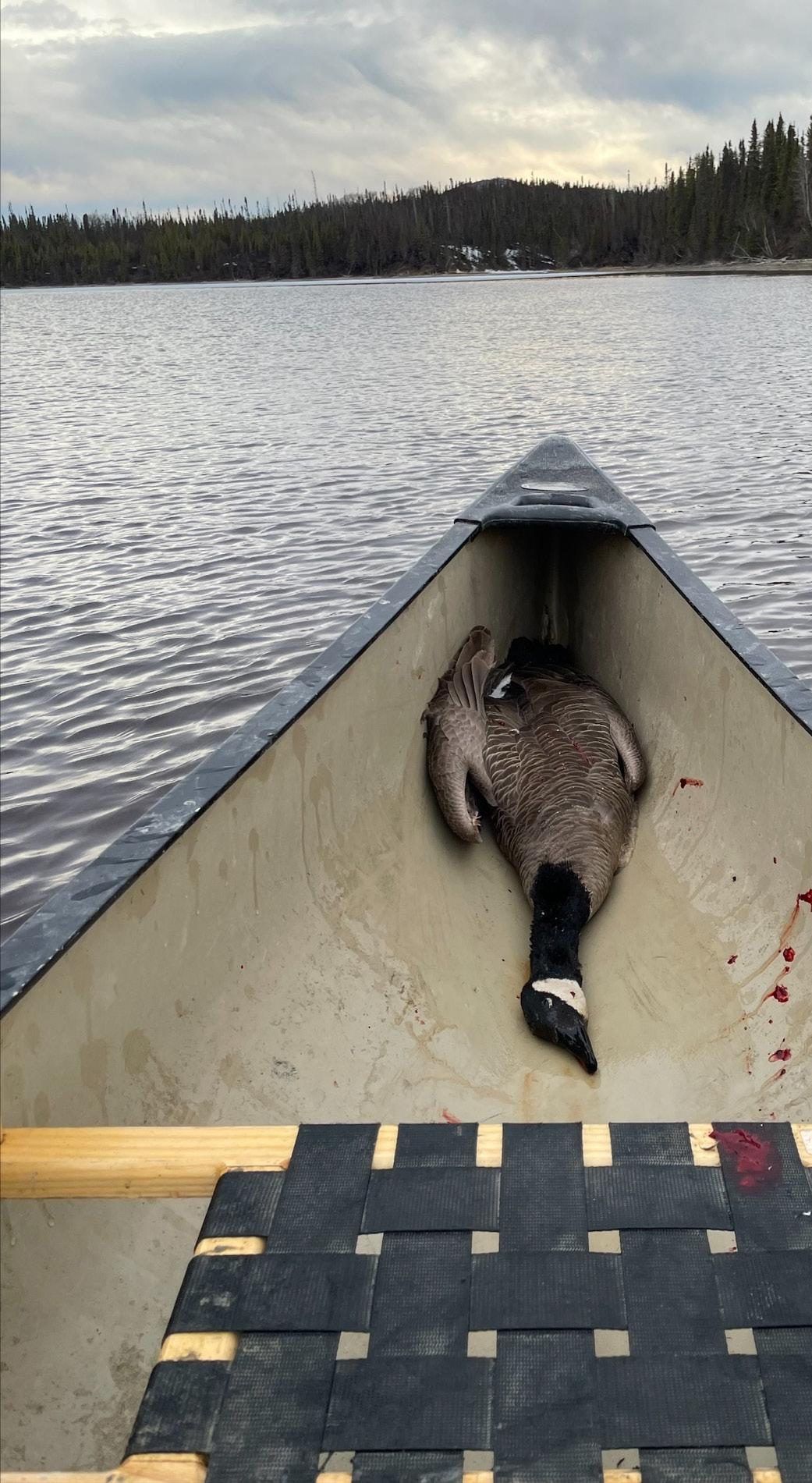
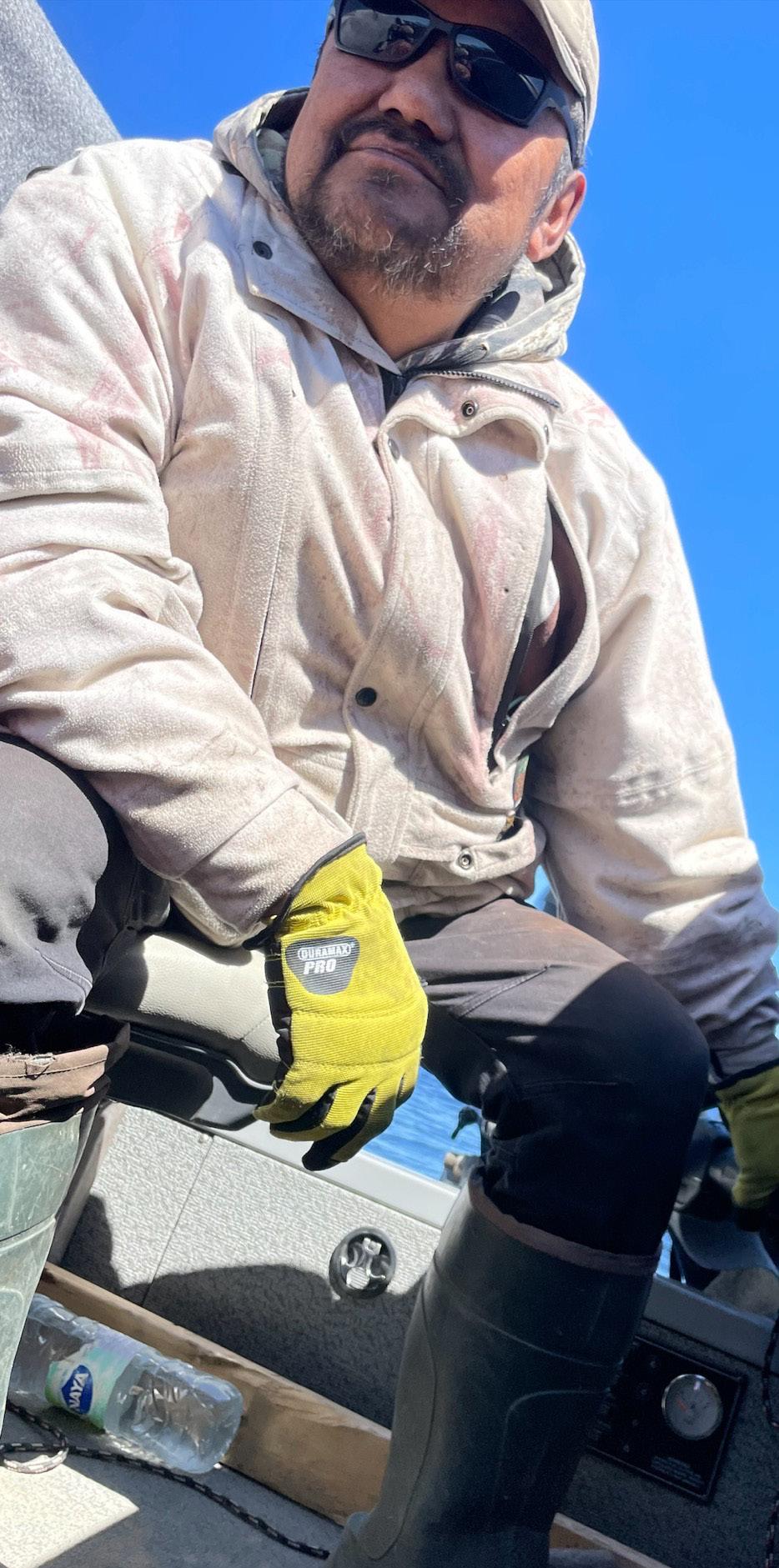


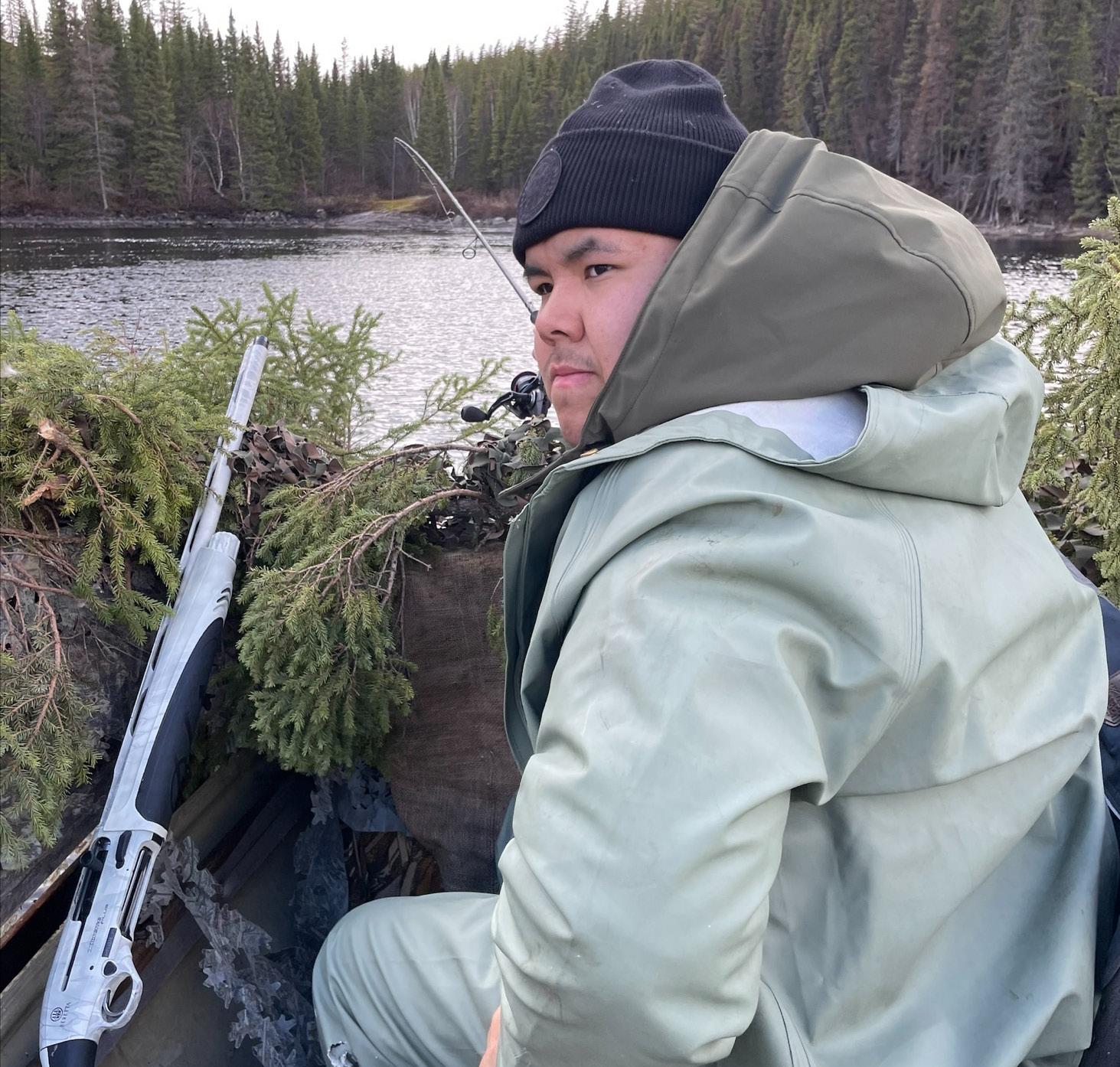
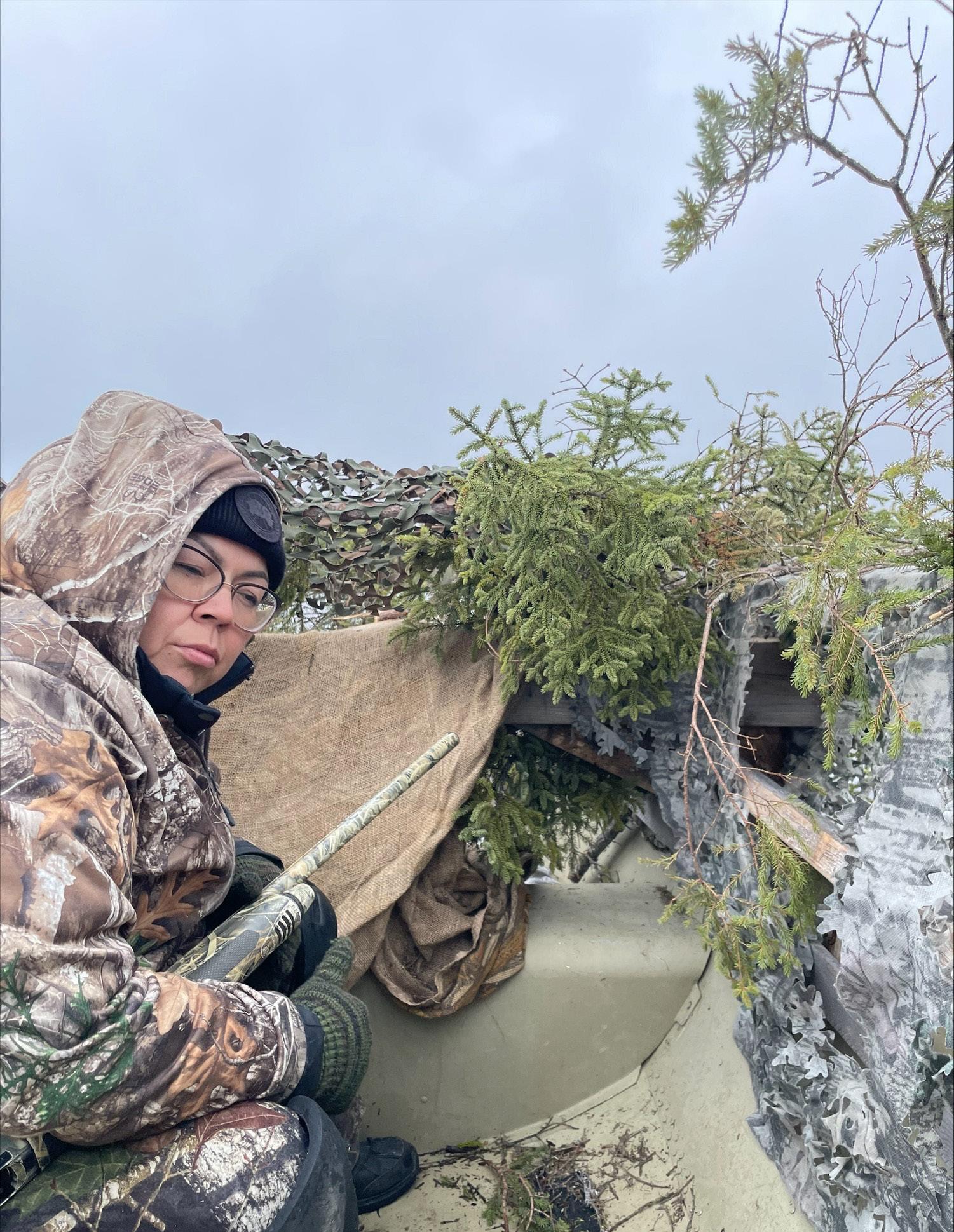
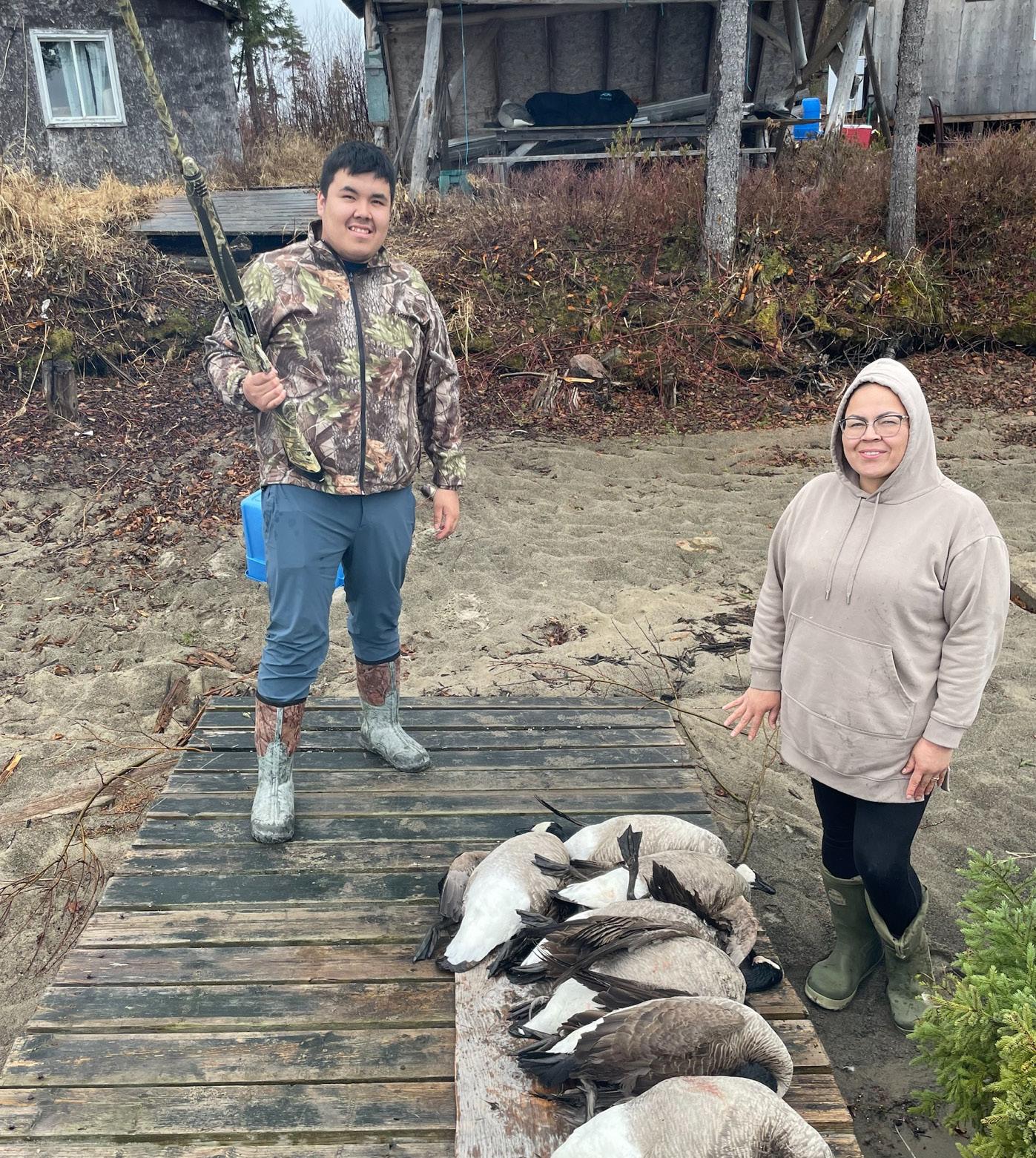
camps. Nowadays we have certain obligations – school, work.”
While Louie Mianscum could formerly travel around his camp on Penicouane Bay by skidoo throughout April, earlier melts in recent years have forced him to return by chopper. Wood gathering and other preparations are now done in February or March and hunting tactics have evolved.
“When the ice is melting fast, we have no choice but to use the ambush style of using a boat blind while they’re in the water,” explained Mianscum. “We can’t do what we used to – you’ve got to be extra careful.”
After 11 days of good hunting on Lake Mistassini, Mianscum visited cousins at Coldwater Lake and Chibougamau Lake to fill his freezer ahead of a big feast he hosts every year when his son, NHL prospect Israel Mianscum, returns home. He said his sons always join part of the hunt, a family tradition he carries forward from his late father, who spent his last day preparing the camp for the following year.
“He went there by himself in October (2014) and I don’t know what happened, but he drowned,” said Mianscum. “We found his body right in front of the camp. It’s important for me to stay at the camp. I don’t know how to explain but it’s like closure. It brings good memories.”
Unfortunately, this year’s Goose Break was not without tragedy. The Cree Nation mourned the Weistche-Georgekish family’s devastating loss of three-year-old Louie Andrew (aka Louie Boy), who went missing on May 1 at Octave River (Sheebeshkw). The Waskaganish community came together on May 14 to pray for his return.
For some, Goose Break is a time for healing on the land or reconnecting with ancestral teachings. Greg Mark-Stewart devoted time to repairing wooden decoys made by his late grandfather and cleaning his campsite, which he was taught always leads to a good harvest.
He donated many of his geese to single mothers and families without hunters.
Up in Whapmagoostui, Joshua J. Kawapit harvested geese for the first time since his father passed away 19 years ago. Since moving back to the community about seven years ago after a decade down south, he’s been slowly returning to his traditional roots by going back to the foundations of what his father taught him, fishing and hunting small game like grouse and ptarmigan before gradually moving up to bigger game.
“It was harder than I expected it to be,” admitted Kawapit. “I still remember as if it was yesterday the first time I got a goose – I was 4 or 5. We were taught at a very young age. That’s the type of excitement I felt again.”
The majority of Kawapit’s youth was spent out at camp with his family, two to three months at a time in both spring and fall. While the long absences left him two years behind in school and resulted in his two older brothers dropping out once they reached the age of majority, Kawapit eventually asked to stay behind to finish his secondary studies.
Always taught to respect the animals that sacrifice their lives, Kawapit said this year’s first harvest brought a mixture of elation and slight remorse. Retrieving the goose before it vanished over the rapids was another challenge. Since the 2021 landslide 4km upriver from Kawapit’s cabin, bearded seals and other wildlife are no longer seen, people can’t fish where they used to and fallen logs prevent boats from travelling upstream.
“A tradition we still hold dear in Whapmagoostui is whenever you harvest something of significance, we give it to someone of significance,” said Kawapit. “The last time I killed a goose, two of my children were not born yet. Now that I’m a grandpa, I thought it would be significant if I gifted the goose to my granddaughter.”
Over a two-week period, Mistissini works with a Sept-Îles company called Innukopteres to transport about 200 people to and from their camps
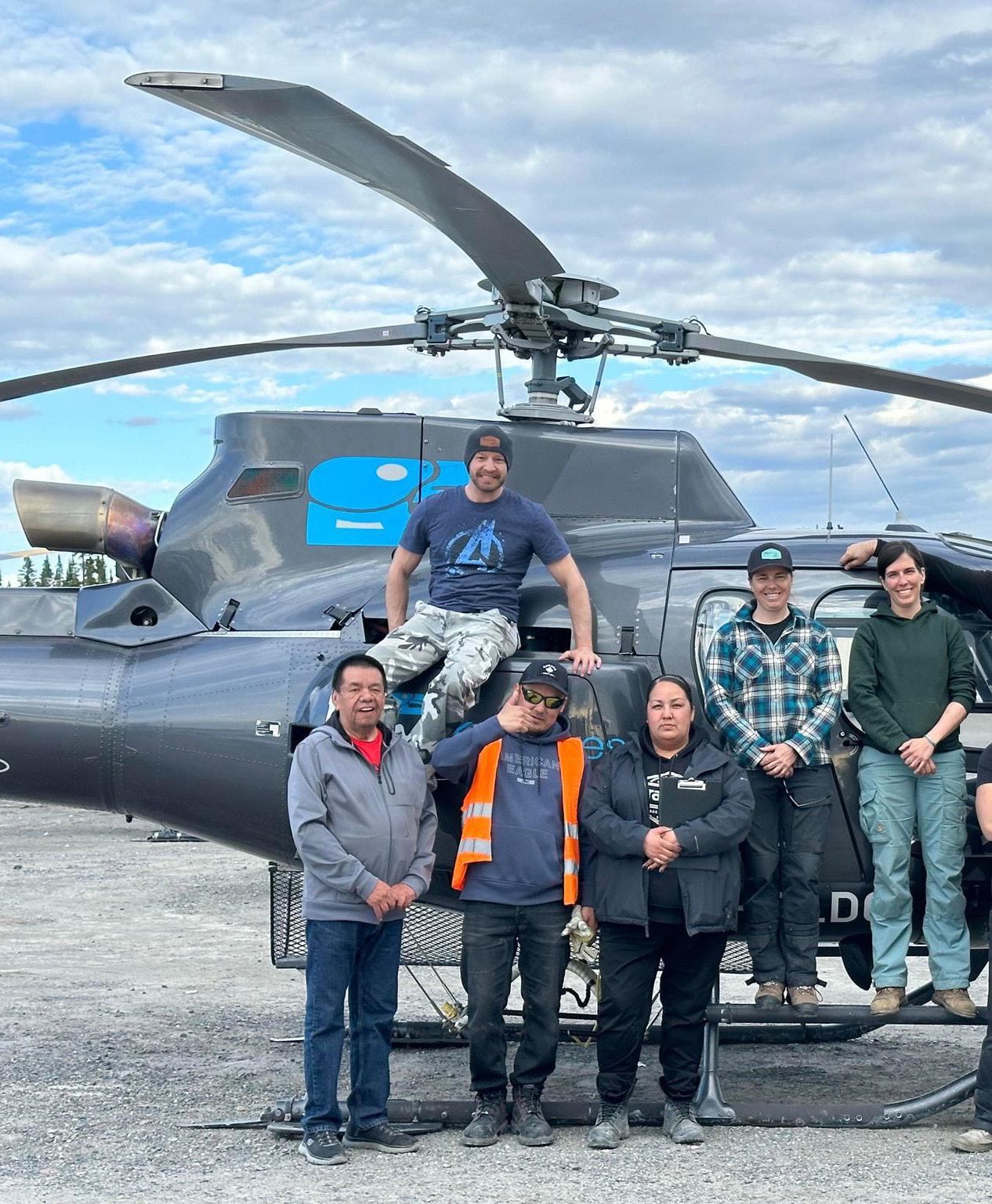
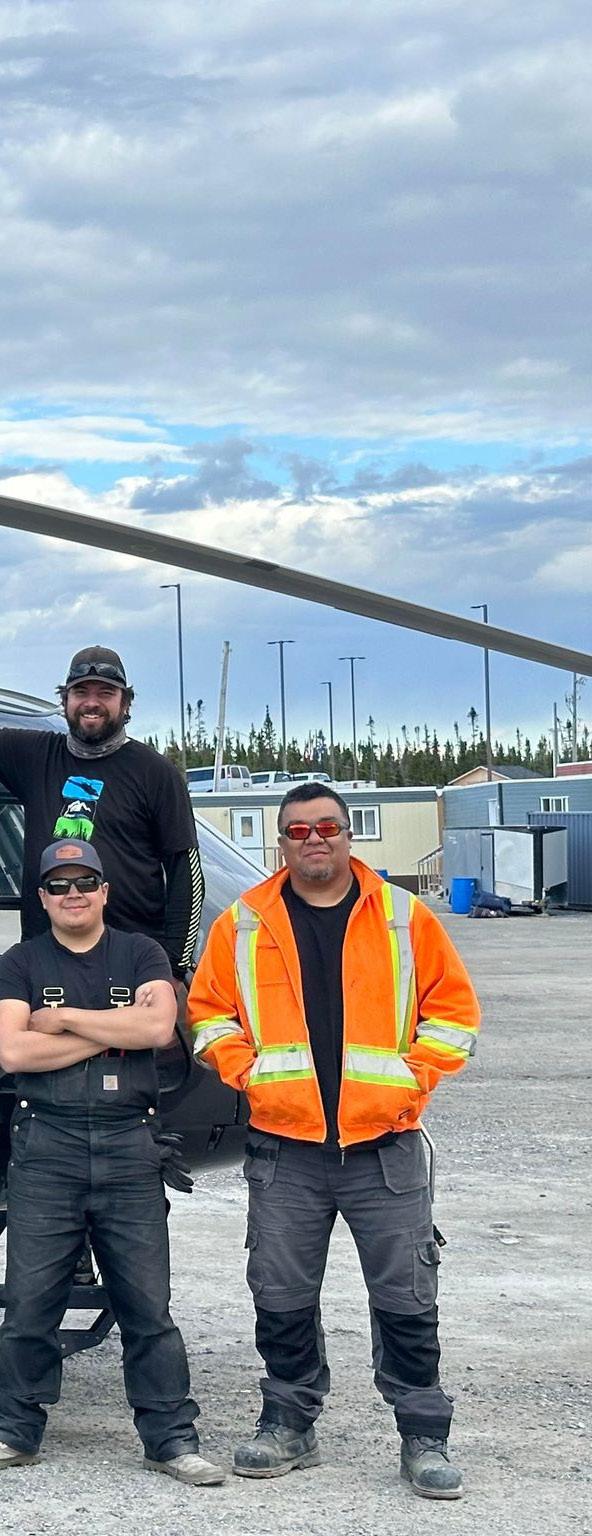
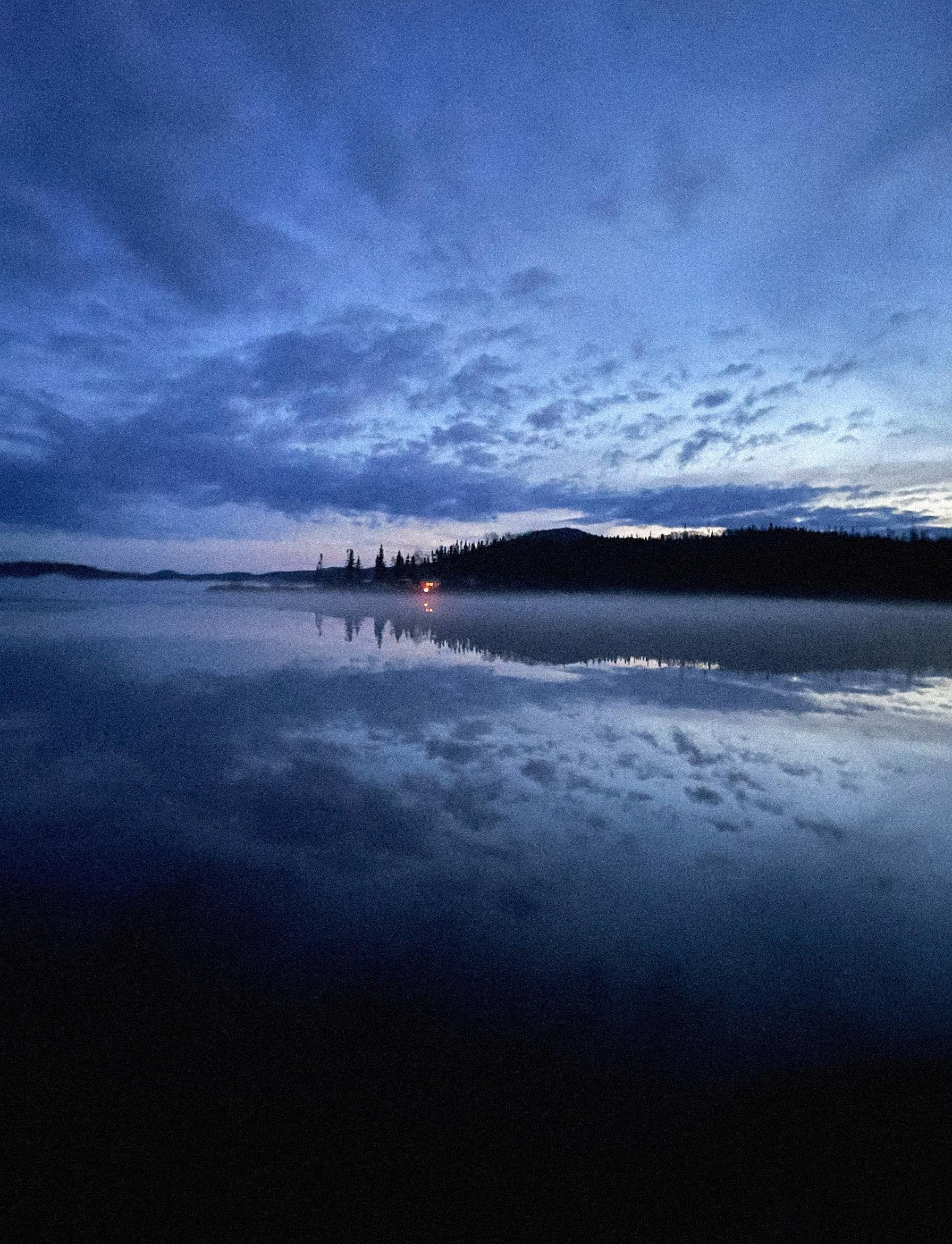

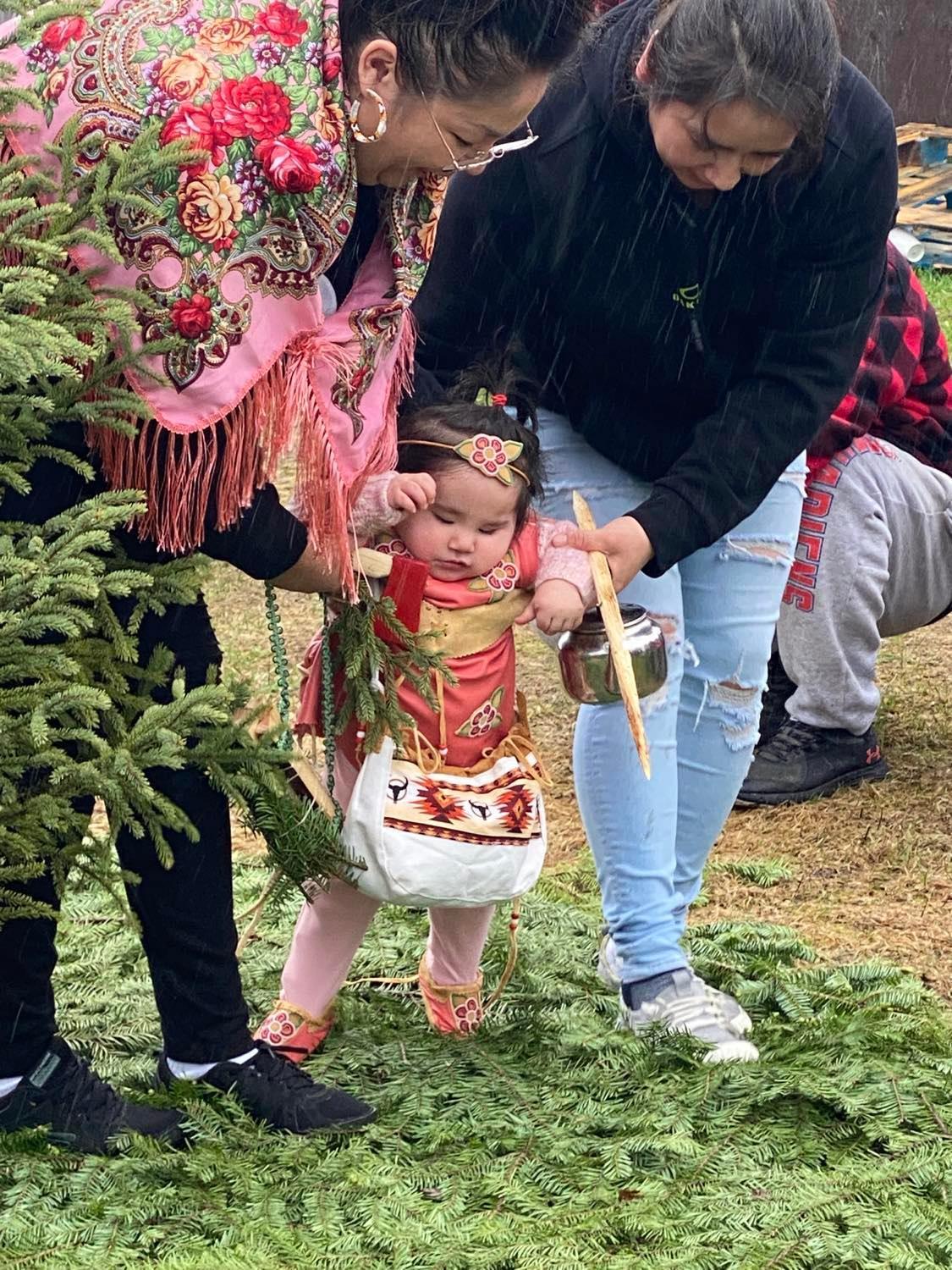

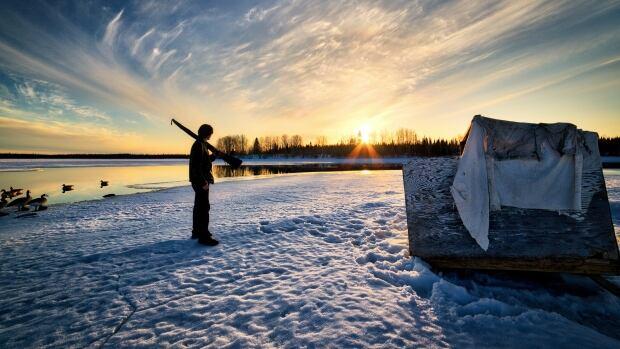

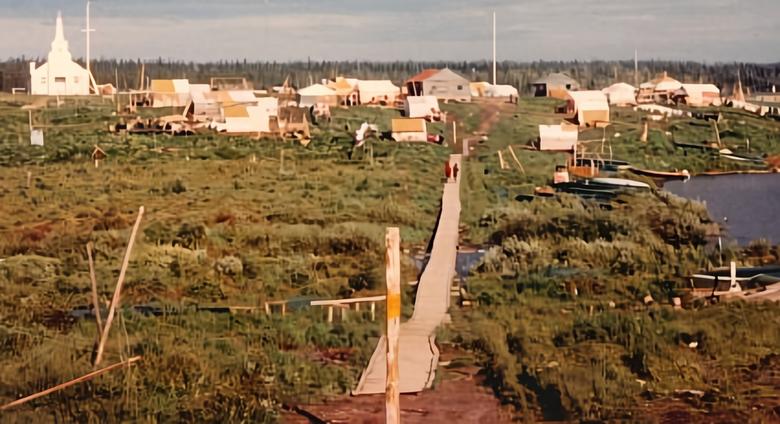

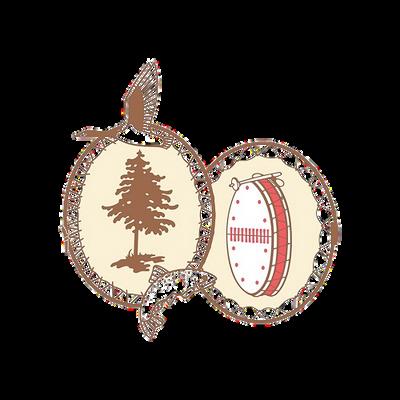

From June 3 to 27, 2024
The ministère des Ressources naturelles et des Forêts (MRNF) invites the public to participate in a public consultation on modifications on the Integrated Forest Management Plans - Operational (PAFIOs) located in management units 026-61, 026-62, 026-64, 026-66 and 085-51 and on special management plan (PAS) of the forest fire 344 located in management units 087-51, 087-62 and 087-63. Forestry work such as timber harvesting, land preparation, reforestation, construction and rehabilitation of multi-purpose roads are potentially planned in some areas of the public forest of the Nord-du-Québec region.
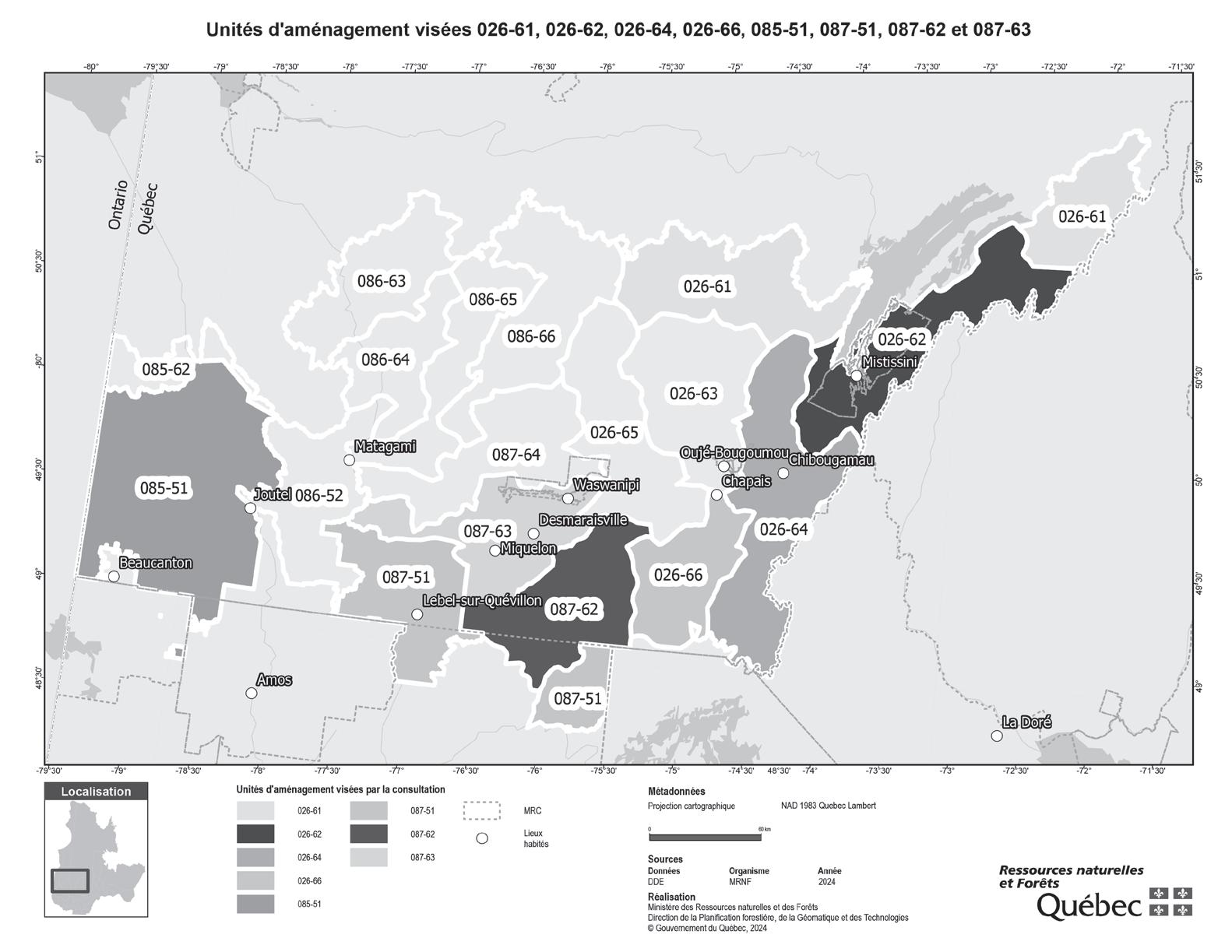
INFORMATION ACTIVITIES

To consult the plans and submit your comments: Québec.ca/consultations-foret-nord-du-québec
You have until June 27, 2024, at 11:59 pm, to provide your comments.
Departmental experts will hold information sessions to specify the areas for potential intervention for public consultation, the way to provide online comments, and the follow-up that will be done regarding addressed concerns. A question-and-answer period with participants will conclude the activity.
Management units 026-61, 026-62, 026-64 and 026-66: Monday, June 10, 2024, starting from 6:30 p.m. - Chibougamau: City Hall Council Room (650, 3e Rue)
Management unit 085-51: Monday, June 03, 2024, starting from 6:30 p.m. - Beaucanton: Municipal Building Room A (2709, boulevard du Curé-McDuff)
Management units 087-51, 087-62 and 087-63 : Tuesday, June 11, 2024, starting from 6:30 p.m. - Lebel-sur-Quévillon: City Hall Room number 11 (500, place Quévillon)
FOR MORE INFORMATION
Specialists are also available by appointment from Monday to Friday from 8:30 a.m. to 12:00 p.m. and from 1:00 p.m. to 4:30 p.m. using the following contact information:
Unité de gestion de Chibougamau 624, 3e Rue
Chibougamau (Québec) G8P 1P1 Telephone: 418-748-2647
By email: nord-du-quebec.foret@mrnf.gouv.qc.ca
Unité de gestion de Mont-Plamondon 645, 1re Rue Est La Sarre (Québec) J9Z 3P3 Telephone: 819-339-7623
Note: This consultation does not allow for the review of the use of public land, or the rights granted to it.
Unité de gestion de Quévillon 1121, boulevard Industriel, C. P. 159 Lebel-sur-Quévillon (Québec) J0Y 1X0 Telephone: 819-755-4838
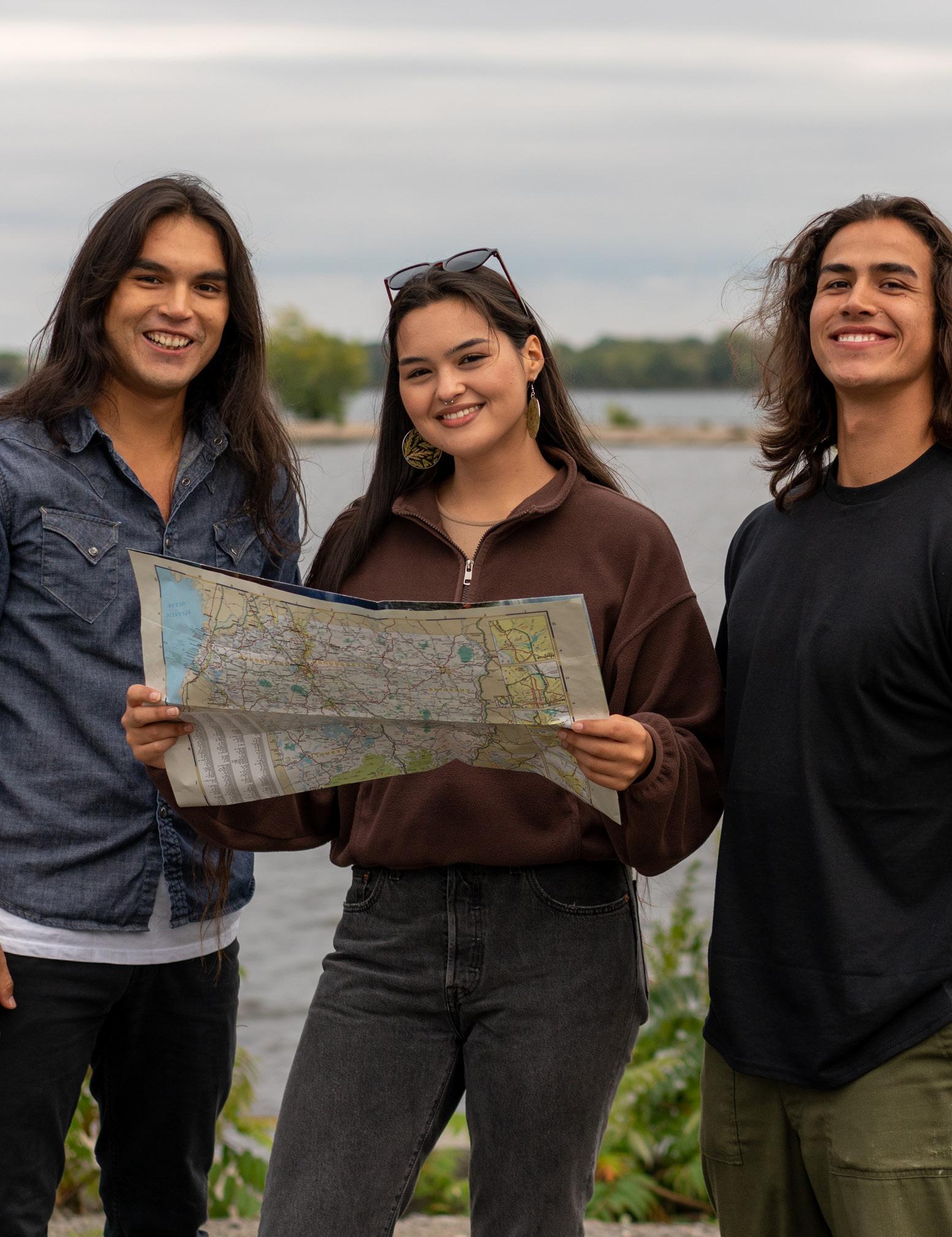
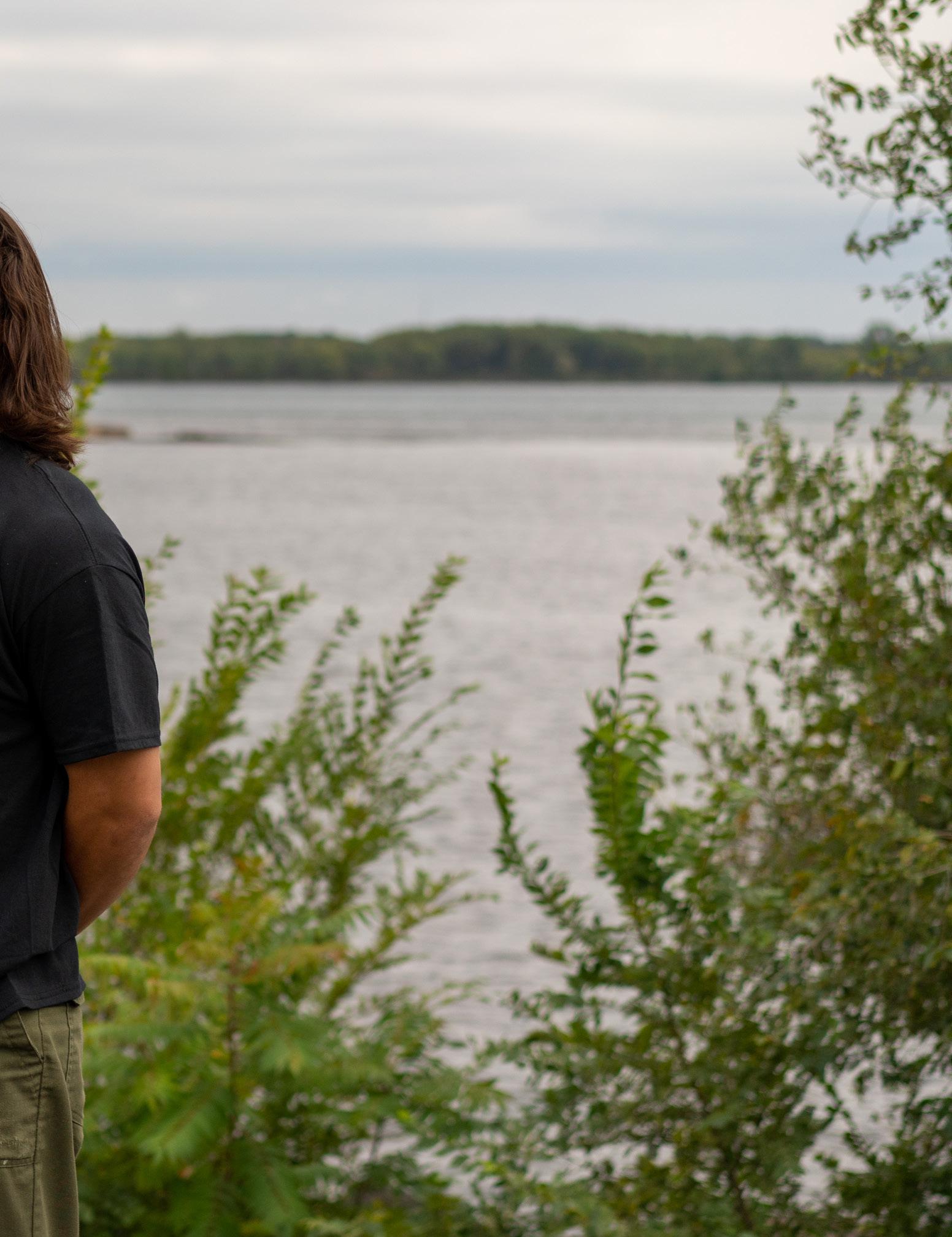
Anew APTN series called Warrior Up! is highlighting the stories of young Indigenous changemakers exemplifying what it means to be a modern-day warrior. Launched May 11, it’s been airing weekly on Saturday mornings and available for streaming on APTN lumi.
Alternately co-hosted by young actors Joshua Odjick, Anne Lambe and Joel Oulette, each episode focuses on one inspiring story from across Turtle Island. Chisasibi’s own Kayla Spencer is featured in Episode 7 alongside Rotshennón:ni Two-Axe from Kahnawake, who together founded Dawson College’s IndigeSTEM mentorship program.
Realizing they were their schools’ only Indigenous science students, they hope to help others from small communities adapt to the rigorous workload and challenges of studying in the city. Since graduating from Dawson, Spencer has been working with Chisasibi’s youth department as she prepares for university studies in astrophysics or aerospace engineering.
“My dream is to open my own observatory up north where we can do our own research,” said Spencer. “Higher education really shapes who you are. It’s the experience that comes with it – becoming more independent makes you grow as a person.”
Accepted into the University of Colorado, Spencer continues to work remotely with Dawson’s IndigeSTEM program, which is now led by Cree nursing student Robin Gull-Saganash. Warrior Up! researcher Ramelle Mair, who developed the show’s concept, described Spencer as “a real powerhouse” who has embraced being a role model for Cree youth.
“You see in their stories it’s because they’re supported that they can support others,” said Mair. “Sometimes we think people are heroes or exceptionally talented so we think I can’t do that. Yes, they’re leaders and know how to use their voice [but] it’s important to know how to ask for help.”
Spencer initially felt unprepared for post-secondary math and science studies, admitting she rarely had homework back in Chisasibi. She credits Dawson’s Journeys First Peoples program with easing the transition. IndigeSTEM mentor Joel Trudeau said Spencer and Two-Axe are both driven, mature, comfortable in their identities and able to express a vision.
Anishinaabe co-host Odjick, who came from Kitigan Zibi to starring in Wildhood and Little Bird, could relate
to overcoming small-town limitations. During this episode, Odjick joins Spencer at Montreal’s planetarium and Two-Axe’s competitive paddling practice. He’s even coaxed into dissecting a moose heart in an IndigeSTEM tutorial led by Two-Axe.
Odjick was inspired by the changemakers’ efforts to improve their communities. He hosted episodes profiling Mi’kmaw activist Sophia Sidarous, who is one of the youngest graduates of Schulich School of Law at Dalhousie University in Halifax, and Trechelle Bunn from Birdtail Sioux Dakota Nation, who organized Canada’s first Residential Run.
But Odjick was most moved by his experience in a Minnesotan tent city helping distribute “blessing bags” with 16-year-old Isaac Garcia.
“An older woman who looked like she was hiding something had a plate of tobacco, used as an offering in prayer,”
recalled Odjick. “There’s so much trauma life puts in our people’s way but they’re still asking the Creator. When she saw I was holding what would help her, she almost broke down crying – it just means the world to them.”
Conceived with an eco-warrior focus, the show’s scope expanded as rousing stories kept pouring in. Changemakers were chosen because their exploits were compelling for television and the timing fit the production’s tight shooting schedule.
Sometimes the story was over before the crew could arrive, which nearly happened when five young Cherokee women retraced the infamous Trail of Tears their ancestors endured during their forced relocation almost 200 years ago, crossing six states by bicycle. Instead Picture This Productions “cobbled together a team” to shoot before principal photography was even ready.
“The hope is APTN will pick us up for another season,” said David Finch, who co-produced the series with Maureen Marovitch. “We have tons more stories. Now there’s a buzz about the show, we’re going to start getting more people.”
Of Cree-Ojibwe-European heritage, Finch co-founded Montreal-based Picture This with Marovitch in 1995, focusing on social issue documentaries.
“A documentary has to move people,” Finch asserted. “We want [viewers] to feel empowered, to change in some way. We’ve been making all sorts of communities’ stories known. We feel like we carry out a social service, like healing people from a distance.”
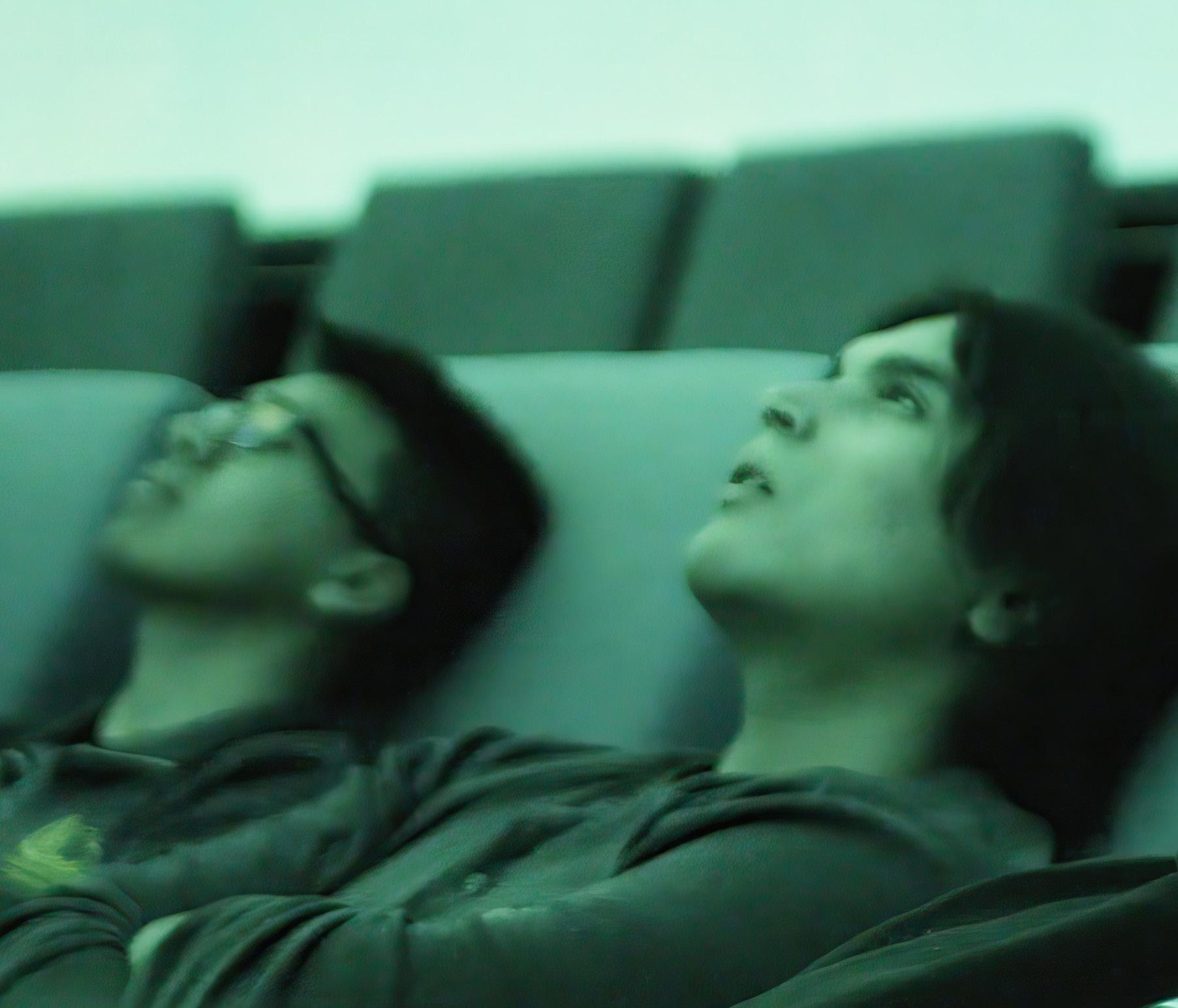
The series broadly interprets the term warrior as leadership figures who respect others and are respected. Finch recalled Tlicho Dene rapper Dylan Hope, who is featured alongside multimedia producer Cole Clark in a Yellowknifebased episode.
“You don’t think he’s a changemaker, but he is,” said Finch. “He’s taken this initiative to voice what’s going on around him and that’s bravery. There are as many ways to define what it means to be a warrior as there are people doing it.”
Finch was particularly moved by Winnipeg-based Rylee Nepinak, who co-founded a youth outreach program. When Nepinak learned about a suicide crisis in the Tataskweyak Cree Nation,
he began introducing youth to traditional healing ceremonies with powerful results.
The series features a companion website including an Activism 101 toolkit for helping youth create change in their own communities. Indigenous empowerment extends to the soundtrack, which includes Cree musicians Mariame, Siibii, the NorthStars and PaulStar. Chisasibi’s Dinah Sam helped the editing team find the right music during her internship experience.
“I always felt like movies were more of a hobby for me, but after this work experience, I now know I can go very far with my desire to go into the film
industry,” said Sam. She was fascinated by co-host Anna Lambe’s greenscreen filming and Inuktitut voice recordings for its Nunavut premiere this fall.
While Spencer was surprised her co-initiative was worthy of a documentary, Finch said her story represents many Indigenous youth who persevere despite significant obstacles.
“This world is so full of strife and people bringing each other down, we need positive thinking and action,” Finch stated. “We’re trying to show there is power and health in positiveness. Every one of these people has that pride in our origins.”
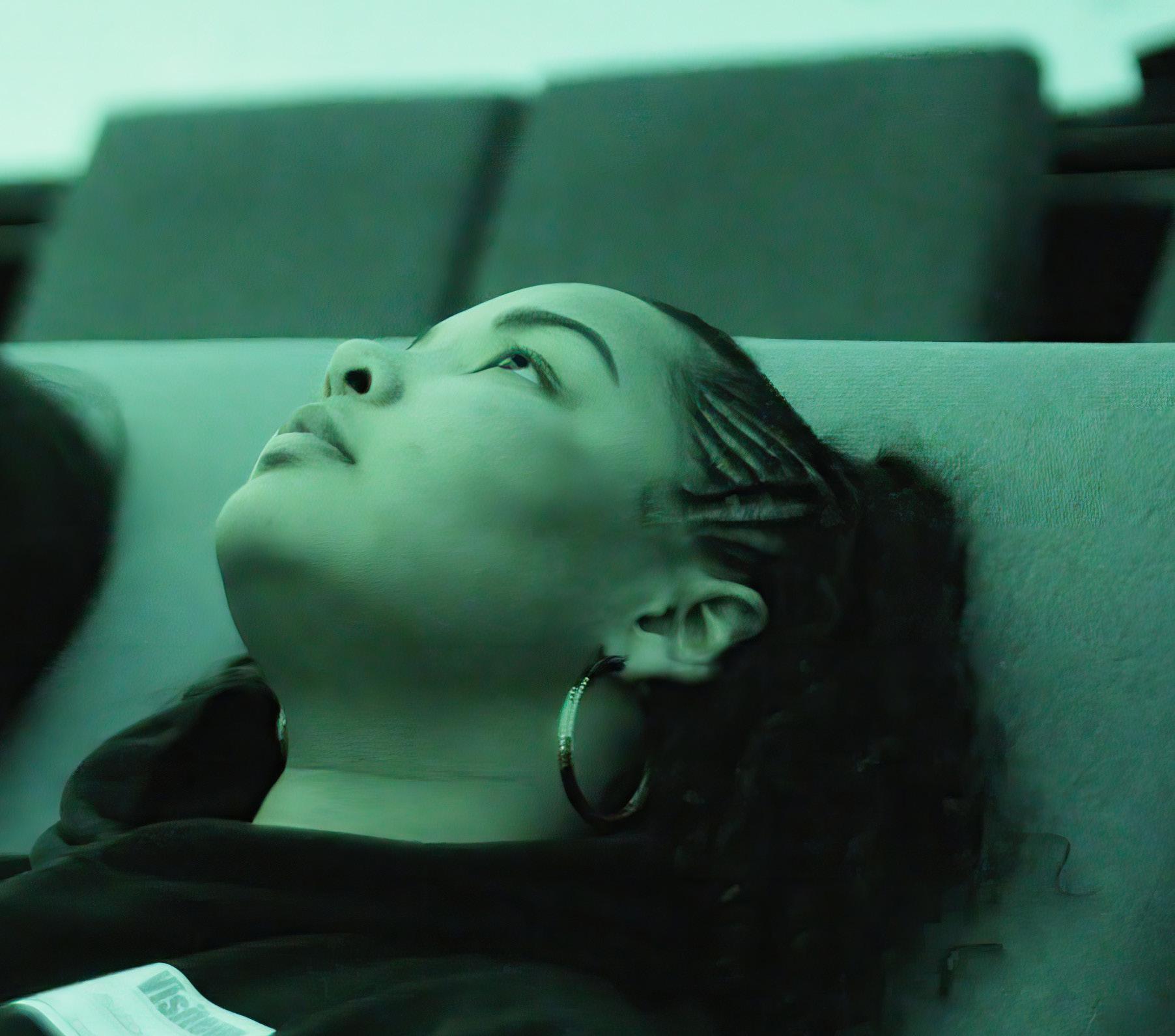
Kayla Spencer, as featured in Episode 7



The Montreal Science Centre is set to whet your appetite with an exhibition that will delight food enthusiasts. Featuring renowned chefs like Normand Laprise, Paul Toussaint, Colombe St-Pierre, CharlesAntoine Crête and Cezin Nottoway, the Banquet exhibition promises to be a culinary extravaganza.
“Quebec’s culinary tradition is multicultural and bursting with colour and is rooted in a rich heritage of high-quality local products,” said Cybèle Robichaud, Montreal Science Centre director. Premiering in North America on May 16, visitors can explore the chef through interactive activities that transform them into apprentice cooks.
The exhibition illuminates varied influences, from Haitian cuisine and Caribbean fusion to the rich tapestry of Indigenous culinary traditions. “Across time and culture, the banquet has forever been an expression of celebration and sharing,” asserted Universcience President Bruno Maquart. “It is an appetizing opportunity to look at food from a variety of perspectives and to celebrate the joys of coming together and eating well.”
At the heart of this exhibition, Chef Cezin Nottoway serves up rich Indigenous culinary traditions through engaging, sensory-driven activities. Her participation in the Banquet exhibition promises to be a profound experience, blending her cultural heritage with the universal language of food.
For Nottoway, the journey into the culinary world began in her early childhood.
“The first people that got me into cooking were my grandmothers and it wasn’t even by choice. It was more like, ‘Do it.’ Here’s some potatoes. Here’s some carrots. Peel them. Here’s some walleye. Filet it,” she said, imitating how her grandmother would instruct her in the kitchen.
“It wasn’t forced, it was a way of living. I grew up in the bush. Sometimes we forget that simplicity is hard. Just for a task like boiling water, you have to find the wood, chop the wood, make the fire…cooking was complicated.”
This upbringing was not just about food but about community and culture. “When we would kill a moose, it would be a time when everyone would get together so we can butcher this moose,” she explained. “When my
dad went trapping and came home with beavers, it was my job to skin the little beavers while my mom did the big ones. That was how I was brought up.”
Her connection to her heritage is evident in her culinary practices. “Anishinaabe means people of the land. Hunting is a central part of who we are. If that’s taken away from us, we will lose our identity. Eating moose meat isn’t simply feeding myself and others – it must be practiced as a ceremony. Serving moose meat is like sharing my hard work, my experience, my love, my respect, and my culture.”
Nottoway’s commitment to passing down these traditions is unwavering. “I want my kids to experience hunting. As an Anishinaabe, it’s part of my identity,” she emphasized. “And now it’s my responsibility to pass down the knowledge.”

It was in summer 2017 after a day of blueberry picking when Nottoway, her husband and two children killed their first moose together as a family.
“We were on our way home when I spotted a moose crossing the highway,” she recalled. Her husband asked what
they should do, and Nottoway said to shoot.
“He looked puzzled because shooting a moose on the highway is illegal, especially under a hydro line, but we needed our meat for the winter. I remember my daughter bursting with joy and my son recording the hunt and my kokum nodding quietly in approval.”
The Interactive Banquet Exhibition is divided into five zones, each offering a unique sensory journey. Nottoway’s culinary expertise and traditional knowledge brings these experiences to life, just as her grandmothers did for her long ago.
The Kitchen: Part kitchen and part culinary lab, this zone invites visitors to step into the shoes of an apprentice cook. “At a young age, I learned to differentiate the various cuts of meat by touch. My grandmothers asked me: does your thumb go through it easily? If not, it’s ‘tough’ meat. If yes, it’s tender meat. I did eventually learn the names of each cut and their placement on diagrams in culinary school, but I prefer this simple technique when I cook moose.”
Nottoway also shares her unique smoking technique called piigidosiig, using a specific type of rotted wood. “You make a fire, and you get the coals nice and hot, and you’d use this wet wood that you have just picked, and that’s what you’d cover your red coals with,” she explained.
“It’s funny to say, but when the rotted wood looks like pulled pork and pulls apart just as easily, that’s when you know the wood is perfect for the piigidosiig technique. With that, you get this amazing smoke coming from this piigidosiig.” She has used this technique to smoke everything from meat to tomatoes and even cheesecake.
The Appetizer: This zone focuses on the senses, teaching visitors how to sample food, use their sense of smell, and understand texture. For Nottoway, creating culinary classics means using the wild foods the way her grandmother would serve it, while adding something
new that she has learned in culinary school.
“My grandmother seasoned her meat was with herbal tea and onions. You know how grandmothers love their tea,” she says. “There was always a pot of tea on the stove no matter what time of day. Why walk for water when the tea is hot and ready?”
Nottoway says that cooking meat with tea gives it an earthy, floral taste that is hard to describe. “It’s just so homey, and it reminds me of my kokums. It tastes like deliciousness.”
The Banquet: Discovering banquet etiquette and the history of banquets, visitors learn the cultural significance of communal eating. “Even today, I enjoy preparing my food outside. Cooking outdoors is freeing to me. It’s a way to stay connected to the elements: land, fire, water, air. It’s a beautiful thing.”
Nottoway named her catering business Wawatay (“northern lights” in Anishinaabe) to symbolize the colours of the spirits of her ancestors. Whether in the great outdoors or kitchen, or when serving dinner to visiting political figures, she’s made cooking a skill that anchors her in traditional cultural knowledge while she captivates critics with her culinary creations.
The Show: This immersive multimedia show features sound and projection, enveloping guests in the aromas of a divine meal. “Just follow me. I will show you and you’ll never forget,” Nottoway promised.
The Educational Workshop: This zone explores the physics and chemistry at work in the kitchen, hosted by the Science Centre’s educational staff. “Kibikdey nah? Or Kweewesin nah?” Nottoway says that in Anishinaabe culture, this is what someone might ask when you come to their home. It means are you hungry? Or, do you want to eat?
“I guess you can say that’s where I get my ‘catering’ perspective from. When I cater people, I am not just feeding them, I am inviting them into my heart, my history, my culture and my childhood.”

Cree students at Dawson present their art at first exhibitionby Patrick Quinn Journalism
Arecent art exhibition at Montreal’s Dawson College showcased the creative talents of the 20 young Indigenous students in the Journeys program. The artwork reflected their experiences in this First Peoples transition program over the past school year as they settled in the city and explored options in higher education.
The Living Perspectives exhibition highlighted the students’ research-creation findings through photography, painting, digital illustration, leather making and other art forms. With steadily increasing numbers of Cree students pursuing higher education, half of this year’s cohort came from Eeyou Istchee.
“Everyone seemed to love our work,” said student Stacey Matoush. “I just loved their reactions, and they gave us really good feedback. I presented photography and fish-skin leather that we did in our Learning Perspectives class.”
As the co-teacher of the Learning Perspectives course and the only Indigenous teacher in the Journeys program, Amanda Iako’tsi:rareh Lickers was instrumental in encouraging students to leave their comfort zones.
“I heard them talking about how they never really thought they would be learning their culture in depth in a westernized institution,” Lickers told the CBC. “Indigenous art is always functional. Like pack baskets, moose hide, or fish skin leather are all such a beau-
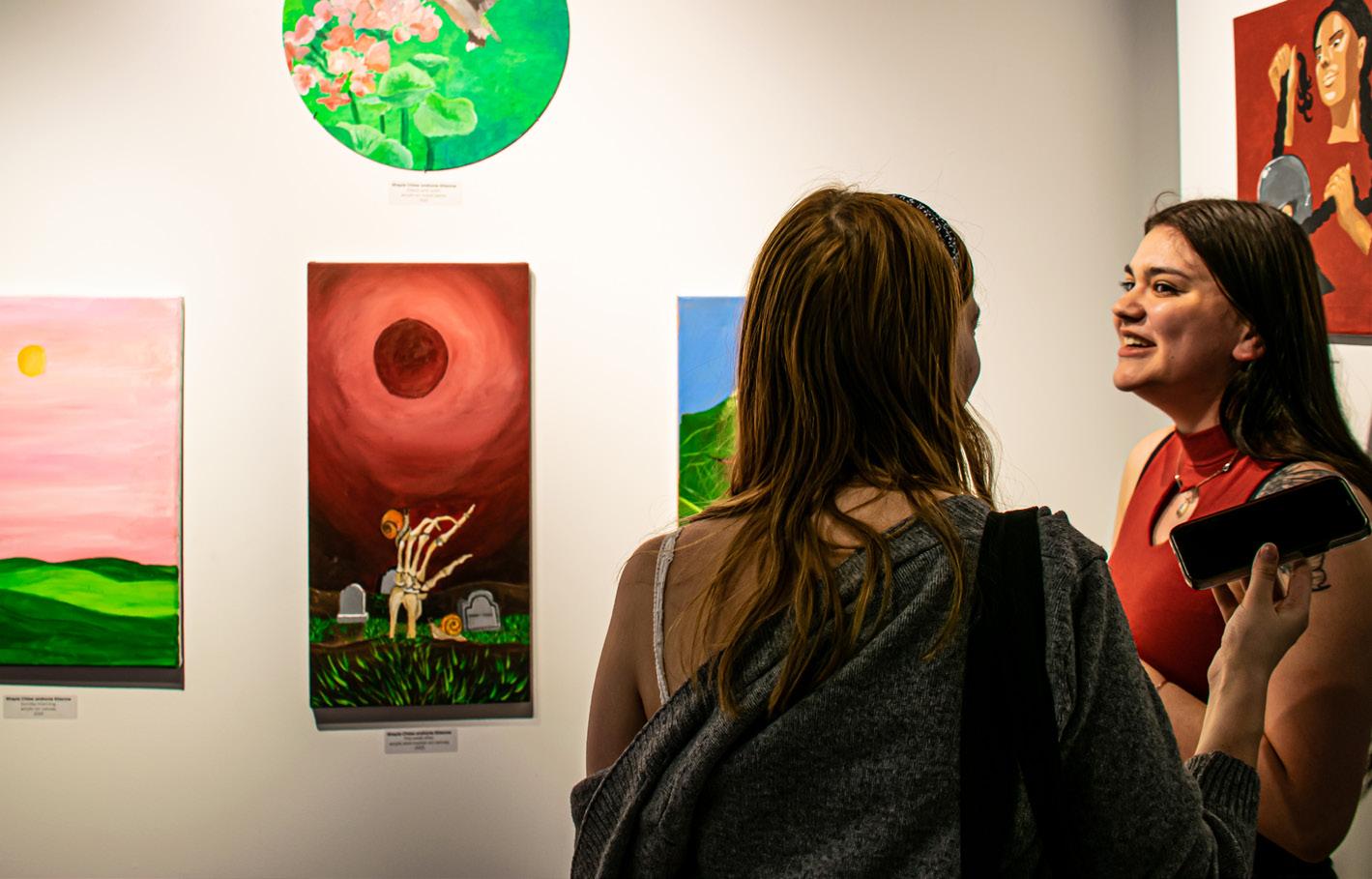
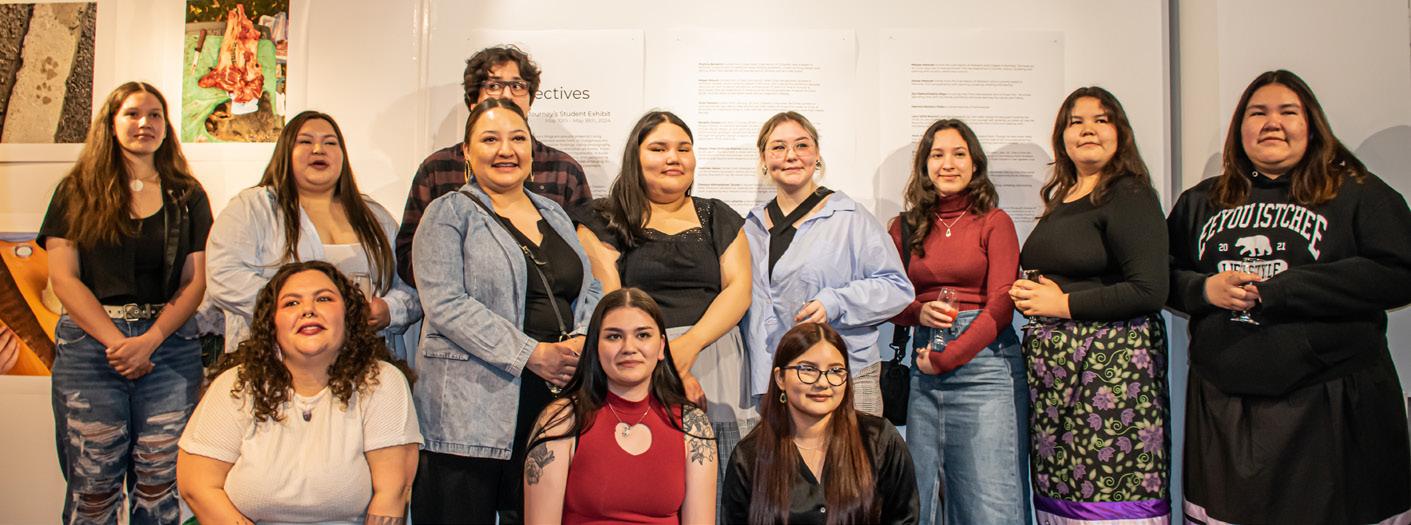
tiful, delicate art form. So, for us, art is animate.”
Throughout the year, students made fish skin leather, tanned moose hide and learned other traditional practices. Lickers helped students develop narrative sovereignty through visual storytelling.
“We got to do printmaking too and the art of taking pictures of anything we notice in our lives,” explained Matoush. “We feel at home when we are in that program – it really helps us get through college as Indigenous students. It was almost like a family.”
Matoush came to the city with her cousin Melissa Matoush, who also presented at the exhibition. They said living together simplified the transition to life in the city. Melissa said college has been both a nerve-wracking and exciting experience, as she always dreamed of living in Montreal.
“I really like going out in the city and taking photographs of things I like,” said Melissa. “Having my art in a professional exhibition is awesome. I always
wanted my art to be put up like that. Crocheting is an obsession of mine and one of my projects was included in the exhibition.”
Curated by Lickers, Living Perspectives opened with an enthusiastic gathering of family, friends and other students May 10. It remained open to the public until May 18 at Dawson’s Warren G. Flowers art gallery.
Faith Shecapio said the students cried seeing their entire year collected in one room. With fish leather hanging from the ceiling and Phylicia Benjamin’s cowhide regalia, the exhibition included photography, paintings and even some poems.
“My family came over and were very happy for me,” Melissa Matoush told the Nation. “They’re really proud of what I’ve become and now my mother is showing off to everyone. I want to take home what I learned and teach my people there how to make this fish skin leather.”
Other Cree students featured included Megan Bosum, Destinee Hester,
Shaylene Louttit-Rupert, Wes Masty Roussel, Shirleyann Rabbitskin and Mark Neacappo. Neacappo participated in recent welcome tours from Cree communities, telling prospective students about his adjustment to CEGEP life and his focus on engineering.
The Journeys program helps accommodate the needs of Cree students. While Mohawk students often live at home during their studies, housing is always a challenge for Crees.
“You can tell which students know each other,” said Jennifer Savard, who co-coordinates the program with Anjali Choksi. “We have study labs and there’s a high Cree attendance. I think they all come as a group. They often use the academic services consistently – I can see the unity and support they have.”
Since Dawson established its First Peoples’ Centre and the one-year Journeys bridging program in 2015, the college gradually expanded services to nurture Indigenous student success. Journeys offers courses needed for any future degree.
The introduction of Quebec’s language reform law, Bill 96, will impact the program in the next school year. The Learning Perspectives course will no longer be offered, although “the heart” of it will be integrated into the Journeys program and Lickers will continue in a co-teaching role.
“The students obviously connect with her so well,” said Savard. “Amanda encouraged the idea of finding beauty wherever you are and celebrating the fact that students are on this journey. We want to make the gallery project an annual event – the benefits are evident. The students were beaming.”
With Bill 96 requiring complementary courses to be only offered in French, the Journeys program will begin offering a physical education course in the fall. As the law allows two of the five newly required French courses to be substituted with an Indigenous language, there will also be new Kanyen’kéha classes with plans to eventually offer other languages like Cree.
Savard said Cree students tend to begin their studies thinking they will return home on weekends before realizing such long drives are unfeasible. To make them feel more at home in the city, the college organized trips to the Cree-Mohawk teepee in Kahnawake and a wilderness skills training outing.
While Journeys isn’t specifically an arts program, the Living Perspectives component helped develop student confidence and self-expression. Stacey Matoush is starting accounting studies at Algonquin College and her cousin Melissa will stay at Dawson in psychology studies.
“There was such a great energy at the vernissage,” Savard said. “They may be shy to consider themselves artists, but this project made it clear you can reach the goals you set out. Having their artwork on the walls validated them.”
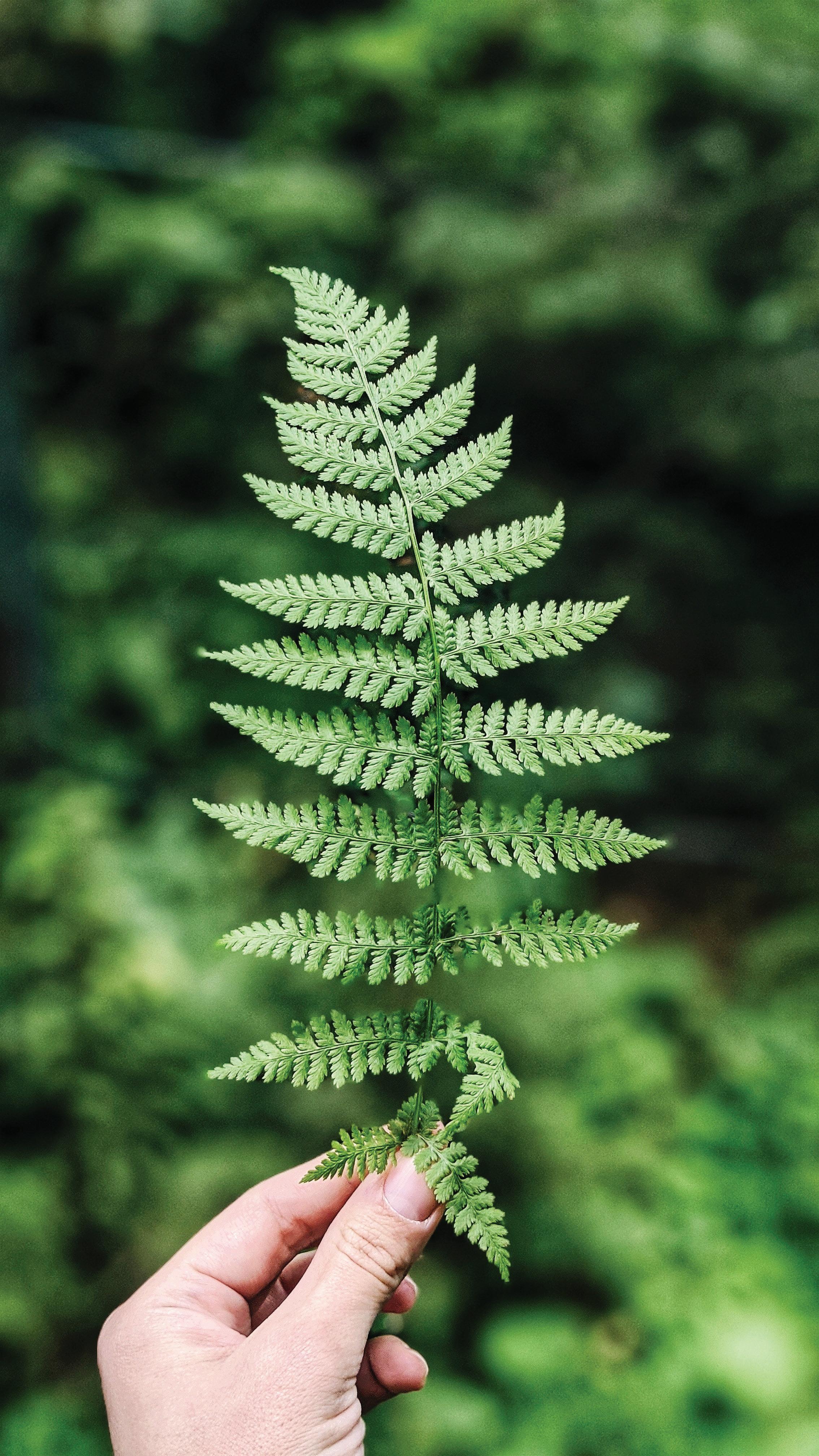

Here’s another edition of the Nation’s puzzle page. Try your hand at Sudoku or Str8ts or our Crossword, or better yet, solve all three and send us a photo!* As always, the answers from last issue are here for you to check your work. Happy hunting.
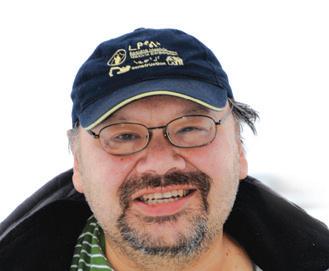

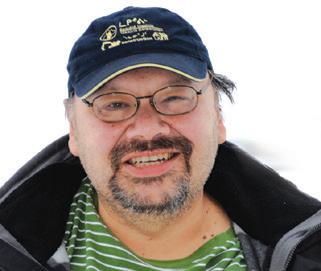
pring without the annual ice breakup is now just a rapid melt with sluggish ice slushing around. I can’t remember the last time I witnessed a real ice break-up – maybe a half century ago.
In those days it seemed to be of Ice Age stature strongly composed of six months of freezing. As the ice melted, the brave ones continued to use it until it was ready to crack and heave downriver in a cascade of energy. The air boomed with the noise of crushing ice as miles and miles of it flowed towards James Bay.
Scenes like this probably only remain in the memories of those who knew the images of life before development. Development always had some trade off. The lands and waters were for convenience and there was more time to do things, other than just staying alive season by season. Today the ice is barely fit to be called ice anymore.
A good friend noted recently as he flew over the nearby lands, there’s water everywhere now and lots of it. Hopefully some of that will drown the still burning roots of last summer’s fires. Maybe we should start worrying about tornadoes now as they seem to nip at the lower parts of our territory.
On another note, hockey is winding down and the energies that kept us rooted in winter are now being honed for warmer activities. Some triathlons are being arranged, and the hustle to set up
Keeping your eye open for parking spaces is becoming a summer sport
fishing derbies will surface very soon. I would suggest that after a derby the catch be donated to those living in the south, those who need shelter, or to the good old Eeyou meechum in long-term hospital care.
Then there will be the search for the fastest softball pitcher and background searches for imports to increase your odds of strikes against the other team. I checked into softball and it’s a popular sport in Canada, especially for our First Nations peoples. So, get that pitching arm well-toned and go to batting practice instead of bingo or other couch potato activities. Get a coach, if not a player import. That’s about all I can say about softball.
There’s a whole slew of outdoor activity for those in the city, especially Montreal. Walking downtown is the only way to get around the place, as construction hurdles abound everywhere, and the infamous orange cones direct your every step. Plus, keeping your eye open for parking spaces is becoming a summer



THURSDAY, JUNE 13TH



sport, albeit frustrating when you have to walk a half mile to get to any shop or restaurant downtown.
As far as walking in the North, the mosquito and blackfly will determine the best time to go for a jog or to the local corner store. I wonder if the cost of insect repellent will increase as the greedy take advantage of your precious blood supply and hold it for ransom with outrageous sticker prices.
Then again, you could go golfing instead.


Recently I was involved in a discussion with my partner and some of his friends who came of age in the 1960s. Our discussion was about how upside down the world is these days with wars in Ukraine and Gaza killing many thousands of people and destroying towns and cities. It is interesting to hear from people who grew up in the 1960s and 1970s because they bring an historical background to what is happening now. Many people I know were part of the hippie and counterculture movement of the time.
During that time there was much social upheaval, and a major war was happening with the US invasion of Vietnam. Young people of the time took to the streets to protest at universities and colleges across North America. One of the driving forces behind the anti-war movement and the counterculture were popular musicians. Young people were listening to music that for the first time confronted the authorities and challenged a war that made no sense to the average person.
The young people kept protesting and produced their own media in many cities that pushed back against warmongers, racism and bigotry. It is amazing to realize that so many young people decided to create their own newspapers and magazines. This gave them a voice and con-
nected them so that they could organize to try to change things in a more positive way. This actually worked as the counterculture movement helped to stop the war in Vietnam and forced the corrupt US President Richard Nixon to resign.
These same waves of counterculture movements also included the modern environmental, anti-war, anti-nuclear, LGBTQ+ and civil rights movements. It was at this time that the American Indian Movement grew in popularity in the US and in Canada saw the rise of Indigenous groups and organizations that wanted to represent their people.
There is no doubt that the hippies of the 1960s find it frustrating that we are still dealing with the same senseless wars, dangerous climate change and governments and corporations moving in undemocratic directions. However, thank goodness young people are finally rising up and protesting the war in Gaza in universities and colleges across North America. Our young musicians and artists are challenging the move away from democracy and protesting war and corruption in government.
I have hope because the same situation occurred in the 1960s and 1970s and it was only through constant peaceful protest and consistent solidarity that they were successful. The Indigenous
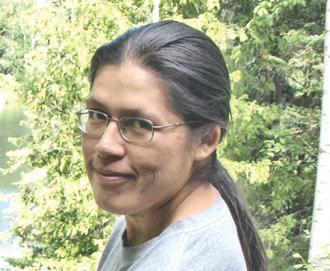
movements and governments that came out of this era are proof of that success. Protests can be ignored for a while, but they cannot be ignored indefinitely.
I love all kinds of music and I find some of the protest songs of the 1960s and beyond inspirational and powerful. They can be found on many streaming services online. Many of these protest songs are still relevant today, like: “Eve Of Destruction” by Barry McGuire, “Where Have All The Flowers Gone” by Peter, Paul and Mary, “War (What Is It Good For)” by Edwin Starr, “Ohio” by Crosby Stills Nash and Young, “The Times They Are A-Changin” by Bob Dylan, “Draft Dodger Rag” by Phil Ochs, “I Don’t Wanna Go To Vietnam” by John Lee Hooker, “A Change Is Gonna Come” by Sam Cooke, “Blowin’ In The Wind” by Bob Dylan, “Fortunate Son” by Creedance Clearwater Revival, “Universal Soldier” by Donovan, “Give Peace A Chance” by the Plastic Ono Band, “The Unknown Soldier” by The Doors, “I-Feel-Like-I’m-Fixin-To-Die Rag” by Country Joe and The Fish, and “Abraham, Martin and John” by Dion.
This playlist and many other songs like this changed the world back then. If the world tunes in like they did in the 1960s, it is almost certain the times will change again.



